- Grades 6-12
- School Leaders
Don't Miss Today's Holiday Giveaway!🎁

76 Easy Science Experiments Using Materials You Already Have On Hand
Because science doesn’t have to be complicated.

If there is one thing that is guaranteed to get your students excited, it’s a good science experiment! While some experiments require expensive lab equipment or dangerous chemicals, there are plenty of cool projects you can do with regular household items. We’ve rounded up a big collection of easy science experiments that anybody can try, and kids are going to love them!
Easy Chemistry Science Experiments
Easy physics science experiments, easy biology and environmental science experiments, easy engineering experiments and stem challenges.
Also, be sure to grab your free printable science experiment recording sheet to use with any of the experiments below.

1. Taste the rainbow
Teach your students about diffusion while creating a beautiful and tasty rainbow. Tip: Have extra Skittles on hand so your class can eat a few!
Learn more: Skittles Diffusion

2. Crystallize sweet treats
Crystal science experiments teach kids about supersaturated solutions. This one is easy to do at home, and the results are absolutely delicious!
Learn more: Rock Candy Experiment
3. Make a volcano erupt
This classic experiment demonstrates a chemical reaction between baking soda (sodium bicarbonate) and vinegar (acetic acid), which produces carbon dioxide gas, water, and sodium acetate.
Learn more: Baking Soda Volcano (Guide + Printable Reflection Sheet)
4. Make elephant toothpaste
This fun project uses yeast and a hydrogen peroxide solution to create overflowing “elephant toothpaste.” Tip: Add an extra fun layer by having kids create toothpaste wrappers for plastic bottles.
Learn more: Elephant Toothpaste (Guide + Printable Reflection Sheet)
5. Blow the biggest bubbles you can
Add a few simple ingredients to dish soap solution to create the largest bubbles you’ve ever seen! Kids learn about surface tension as they engineer these bubble-blowing wands.
Learn more: Giant Soap Bubbles (Guide + Printable Reflection Sheet)
6. Demonstrate the “magic” leakproof bag
All you need is a zip-top plastic bag, sharp pencils, and water to blow your kids’ minds. Once they’re suitably impressed, teach them how the “trick” works by explaining the chemistry of polymers.
Learn more: Leakproof Bag (Guide + Printable Reflection Sheet)

7. Use apple slices to learn about oxidation
Have students make predictions about what will happen to apple slices when immersed in different liquids, then put those predictions to the test. Have them record their observations.
Learn more: Apple Oxidation
8. Float a marker man
Their eyes will pop out of their heads when you “levitate” a stick figure right off the table! This experiment works due to the insolubility of dry-erase marker ink in water, combined with the lighter density of the ink.
Learn more: Floating Marker Man

9. Discover density with hot and cold water
There are a lot of easy science experiments you can do with density. This one is extremely simple, involving only hot and cold water and food coloring, but the visuals make it appealing and fun.
Learn more: Hot and Cold Water Science Experiment

10. Layer more liquids
This density demo is a little more complicated, but the effects are spectacular. Slowly layer liquids like honey, dish soap, water, and rubbing alcohol in a glass. Kids will be amazed when the liquids float one on top of the other like magic (except it is really science).
Learn more: Layered Liquids

11. Grow a carbon sugar snake
Easy science experiments can still have impressive results. This eye-popping chemical reaction demonstration only requires simple supplies like sugar, baking soda, and sand.
Learn more: Carbon Sugar Snake
12. Mix up some slime
Tell kids you’re going to make slime at home, and watch their eyes light up! There are a variety of ways to make slime, so try a few different recipes to find the one you like best.
Learn more: 4 Slime Recipes (Guide + Printable Reflection Sheet)

13. Make homemade bouncy balls
These homemade bouncy balls are easy to make since all you need is glue, food coloring, borax powder, cornstarch, and warm water. You’ll want to store them inside a container like a plastic egg because they will flatten out over time.
Learn more: Make-Your-Own Bouncy Balls

14. Create eggshell chalk
Eggshells contain calcium, the same material that makes chalk. Grind them up and mix them with flour, water, and food coloring to make your very own sidewalk chalk.
Learn more: Eggshell Chalk
15. Make naked eggs
This is so cool! Use vinegar to dissolve the calcium carbonate in an eggshell to discover the membrane underneath that holds the egg together. Then, use the “naked” egg for another easy science experiment that demonstrates osmosis .
Learn more: Egg and Vinegar Experiment (Guide + Printable Reflection Sheet)
16. Turn milk into plastic
This sounds a lot more complicated than it is, but don’t be afraid to give it a try. Use simple kitchen supplies to create plastic polymers from plain old milk. Sculpt them into cool shapes when you’re done.

17. Test pH using cabbage
Teach kids about acids and bases without needing pH test strips. Simply boil some red cabbage and use the resulting water to test various substances—acids turn red and bases turn green.
Learn more: Cabbage pH

18. Clean some old coins
Use common household items to make old oxidized coins clean and shiny again in this simple chemistry experiment. Ask kids to predict (hypothesize) which will work best, then expand the learning by doing some research to explain the results.
Learn more: Cleaning Coins

19. Pull an egg into a bottle
This classic easy science experiment never fails to delight. Use the power of air pressure to suck a hard-boiled egg into a jar, no hands required.
Learn more: Egg in a Bottle
20. Blow up a balloon without blowing
Chances are good you probably did easy science experiments like this when you were in school. The baking soda and vinegar balloon experiment demonstrates the reactions between acids and bases when you fill a bottle with vinegar and a balloon with baking soda.
Learn more: Baking Soda and Vinegar Balloon (Guide + Printable Reflection Sheet)
21. Assemble a DIY lava lamp
This 1970s trend is back—as an easy science experiment! This activity combines acid-base reactions with density for a totally groovy result.

22. Explore how sugary drinks affect teeth
The calcium content of eggshells makes them a great stand-in for teeth. Use eggs to explore how soda and juice can stain teeth and wear down the enamel. Expand your learning by trying different toothpaste-and-toothbrush combinations to see how effective they are.
Learn more: Sugar and Teeth Experiment
23. Mummify a hot dog
If your kids are fascinated by the Egyptians, they’ll love learning to mummify a hot dog! No need for canopic jars , just grab some baking soda and get started.
24. Extinguish flames with carbon dioxide
This is a fiery twist on acid-base experiments. Light a candle and talk about what fire needs in order to survive. Then, create an acid-base reaction and “pour” the carbon dioxide to extinguish the flame. The CO2 gas acts like a liquid, suffocating the fire.

25. Send secret messages with invisible ink
Turn your kids into secret agents. Write messages with a paintbrush dipped in lemon juice, then hold the paper over a heat source and watch the invisible become visible as oxidation goes to work.
Learn more: Invisible Ink
26. Create dancing popcorn
This is a fun version of the classic baking soda and vinegar experiment, perfect for the younger crowd. The bubbly mixture causes popcorn to dance around in the water.
Learn more: Dancing Popcorn (Guide + Printable Reflection Sheet)
27. Shoot a soda geyser sky-high
You’ve always wondered if this really works, so it’s time to find out for yourself. Kids will marvel at the chemical reaction that sends diet soda shooting high in the air when Mentos are added.
Learn more: Mentos and Coke Experiment (Guide + Printable Reflection Sheet)

28. Send a teabag flying
Hot air rises, and this experiment can prove it. You’ll want to supervise kids with fire, of course. For added safety, try this one outside.
Learn more: Flying Tea Bags
29. Create magic milk
This fun and easy science experiment demonstrates principles related to surface tension, molecular interactions, and fluid dynamics.
Learn more: Magic Milk Experiment (Guide + Printable Reflection Sheet)

30. Watch the water rise
Learn about Charles’s law with this simple experiment. As the candle burns, using up oxygen and heating the air in the glass, the water rises as if by magic.
Learn more: Rising Water Experiment

31. Learn about capillary action
Kids will be amazed as they watch the colored water move from glass to glass, and you’ll love the easy and inexpensive setup. Gather some water, paper towels, and food coloring to teach the scientific magic of capillary action.
Learn more: Capillary Action

32. Give a balloon a beard
Equally educational and fun, this experiment will teach kids about static electricity using everyday materials. Kids will get a kick out of creating beards on their balloon people!
Learn more: Static Electricity

33. Find your way with a DIY compass
Here’s an old classic that never fails to impress. Magnetize a needle, float it on the water’s surface, and it will always point north.
Learn more: How To Make a Compass
34. Crush a can using air pressure
Sure, it’s easy to crush a soda can with your bare hands, but what if you could do it without touching it at all? That’s the power of air pressure!

35. Tell time using the sun
While people use clocks or even phones to tell time today, there was a time when a sundial was the best means to do that. Kids can create their own sundials using everyday materials like cardboard and pencils.
Learn more: Make Your Own Sundial
36. Launch a bottle rocket
Grab a cork, plastic bottle, cardboard, duct tape, and bike pump to learn about the laws of motion.
Learn more: Bottle Rocket (Guide + Printable Reflection Sheet)

37. Make sparks with steel wool
All you need is steel wool and a 9-volt battery to perform this science demo that’s bound to make their eyes light up! Kids learn about chain reactions, chemical changes, and more.
Learn more: Steel Wool Electricity
38. Levitate a Ping-Pong ball
This experiment is really all about Bernoulli’s principle. You only need plastic bottles, bendy straws, and Ping-Pong balls to make the science magic happen.

39. Whip up a tornado in a bottle
There are plenty of versions of this classic experiment out there, but we love this one because it sparkles. Kids learn about a vortex and what it takes to create one.
Learn more: Tornado in a Bottle

40. Monitor air pressure with a DIY barometer
This simple but effective DIY science project teaches kids about air pressure and meteorology. They’ll have fun tracking and predicting the weather with their very own barometer.
Learn more: How To Make a Barometer

41. Peer through an ice magnifying glass
Students will certainly get a thrill out of seeing how an everyday object like a piece of ice can be used as a magnifying glass. Be sure to use purified or distilled water since tap water will have impurities in it that will cause distortion.
Learn more: Ice Magnifying Glass

42. String up some sticky ice
Can you lift an ice cube using just a piece of string? This quick experiment teaches you how. Use a little salt to melt the ice and then refreeze the ice with the string attached.
Learn more: Sticky Ice

43. “Flip” a drawing with water
Light refraction causes some really cool effects, and there are multiple easy science experiments you can do with it. This one uses refraction to “flip” a drawing; you can also try the famous “disappearing penny” trick .
Learn more: Light Refraction With Water
44. Color some flowers
We love how simple this project is to re-create since all you’ll need are some white carnations, food coloring, glasses, and water. The end result is just so beautiful!
45. Use glitter to fight germs
Everyone knows that glitter is just like germs—it gets everywhere and is so hard to get rid of! Use that to your advantage and show kids how soap fights glitter and germs.

46. Re-create the water cycle in a bag
You can do so many easy science experiments with a simple zip-top bag. Fill one partway with water and set it on a sunny windowsill to see how the water evaporates up and eventually “rains” down.
Learn more: Water Cycle in a Bag and Water Cycle Lesson Slides and Video

47. Learn about plant transpiration
Your backyard is a terrific place for easy science experiments. Grab a plastic bag and rubber band to learn how plants get rid of excess water they don’t need, a process known as transpiration.
Learn more: Plant Transpiration

48. Clean up an oil spill
Before conducting this experiment, teach your students about engineers who solve environmental problems like oil spills. Then, have your students use provided materials to clean the oil spill from their oceans.
Learn more: Oil Spill

49. Construct a pair of model lungs
Kids get a better understanding of the respiratory system when they build model lungs using a plastic water bottle and some balloons. You can modify the experiment to demonstrate the effects of smoking too.
Learn more: Lung Science Experiment

50. Experiment with limestone rocks
Kids love to collect rocks, and there are plenty of easy science experiments you can do with them. In this one, pour vinegar over a rock to see if it bubbles. If it does, you’ve found limestone!
Learn more: Limestone Experiments

51. Turn a bottle into a rain gauge
All you need is a plastic bottle, a ruler, and a permanent marker to make your own rain gauge. Monitor your measurements and see how they stack up against meteorology reports in your area.
Learn more: How To Make a Rain Gauge

52. Build up towel mountains
This clever demonstration helps kids understand how some landforms are created. Use layers of towels to represent rock layers and boxes for continents. Then pu-u-u-sh and see what happens!
Learn more: Towel Mountains

53. Take a play dough core sample
Learn about the layers of the earth by building them out of play dough, then take a core sample with a straw. ( Love Play-Doh? Get more learning ideas here. )
Learn more: Play Dough Core Sampling

54. Project the stars on your ceiling
Use the video lesson in the link below to learn why stars are only visible at night. Then create a DIY star projector to explore the concept hands-on.
Learn more: DIY Star Projector

55. Make it rain
Use shaving cream and food coloring to simulate clouds and rain. This is an easy science experiment little ones will beg to do over and over.
Learn more: Shaving Cream Rain
56. Blow up your fingerprint
This is such a cool (and easy!) way to look at fingerprint patterns. Inflate a balloon a bit, use some ink to put a fingerprint on it, then blow it up big to see your fingerprint in detail.

57. Snack on a DNA model
Twizzlers, gumdrops, and a few toothpicks are all you need to make this super-fun (and yummy!) DNA model.
Learn more: Edible DNA Model
58. Dissect a flower
Take a nature walk and find a flower or two. Then bring them home and take them apart to discover all the different parts of flowers.

59. Craft smartphone speakers
No Bluetooth speaker? No problem! Put together your own from paper cups and toilet paper tubes.
Learn more: Smartphone Speakers

60. Race a balloon-powered car
Kids will be amazed when they learn they can put together this awesome racer using cardboard and bottle-cap wheels. The balloon-powered “engine” is so much fun too.
Learn more: Balloon-Powered Car

61. Build a Ferris wheel
You’ve probably ridden on a Ferris wheel, but can you build one? Stock up on wood craft sticks and find out! Play around with different designs to see which one works best.
Learn more: Craft Stick Ferris Wheel
62. Design a phone stand
There are lots of ways to craft a DIY phone stand, which makes this a perfect creative-thinking STEM challenge.
63. Conduct an egg drop
Put all their engineering skills to the test with an egg drop! Challenge kids to build a container from stuff they find around the house that will protect an egg from a long fall (this is especially fun to do from upper-story windows).
Learn more: Egg Drop Challenge Ideas

64. Engineer a drinking-straw roller coaster
STEM challenges are always a hit with kids. We love this one, which only requires basic supplies like drinking straws.
Learn more: Straw Roller Coaster
65. Build a solar oven
Explore the power of the sun when you build your own solar ovens and use them to cook some yummy treats. This experiment takes a little more time and effort, but the results are always impressive. The link below has complete instructions.
Learn more: Solar Oven (Guide + Printable Reflection Sheet)

66. Build a Da Vinci bridge
There are plenty of bridge-building experiments out there, but this one is unique. It’s inspired by Leonardo da Vinci’s 500-year-old self-supporting wooden bridge. Learn how to build it at the link, and expand your learning by exploring more about Da Vinci himself.
Learn more: Da Vinci Bridge
67. Step through an index card
This is one easy science experiment that never fails to astonish. With carefully placed scissor cuts on an index card, you can make a loop large enough to fit a (small) human body through! Kids will be wowed as they learn about surface area.

68. Stand on a pile of paper cups
Combine physics and engineering and challenge kids to create a paper cup structure that can support their weight. This is a cool project for aspiring architects.
Learn more: Paper Cup Stack

69. Test out parachutes
Gather a variety of materials (try tissues, handkerchiefs, plastic bags, etc.) and see which ones make the best parachutes. You can also find out how they’re affected by windy days or find out which ones work in the rain.
Learn more: How To Make a Parachute

70. Recycle newspapers into an engineering challenge
It’s amazing how a stack of newspapers can spark such creative engineering. Challenge kids to build a tower, support a book, or even build a chair using only newspaper and tape!
Learn more: Newspaper STEM Challenge

71. Use rubber bands to sound out acoustics
Explore the ways that sound waves are affected by what’s around them using a simple rubber-band “guitar.” (Kids absolutely love playing with these!)
Learn more: Sound Experiment

72. Assemble a better umbrella
Challenge students to engineer the best possible umbrella from various household supplies. Encourage them to plan, draw blueprints, and test their creations using the scientific method.
Learn more: Umbrella STEM Challenge
73. Grow rock candy
Turn science into a sweet treat by making rock candy. Dissolve sugar in hot water to create a solution, then let it cool as crystals slowly form on a stick or string. The best part is that the kids get to eat their experiment when it’s done!
74. Create a rain cloud in a jar
Bring weather science indoors with this fun hands-on project. Use shaving cream to mimic clouds and add drops of food coloring to simulate rain. It’s a great way to explore the water cycle without even having to step outside!
75. Brighten up with rainbow celery
Make your science lesson more vibrant with a splash of color. Drop celery stalks into glasses of water with food dye, and watch as the beautiful colors travel up through the stems.
76. Safely view a solar eclipse
Teach your students about the solar eclipse, and help them safely view this exciting event with just a few simple materials.
Learn more: Solar Eclipse Viewer (Guide + Printable Reflection Sheet)
Get your free printable science experiment recording sheet!
Just fill out the form on this page to get instant access to your free printable experiment recording sheet.
Plus, visit our science hub for everything science for grades K-12!
Sign up for our newsletters to get all the latest learning ideas straight to your inbox., you might also like.

Giant Bubbles Experiment: How-To Plus Free Worksheet
It'll blow everyone away! Continue Reading
Copyright © 2024. All rights reserved. 5335 Gate Parkway, Jacksonville, FL 32256

14 Simple (and fun!) STEM Activities You Can Do Today
Krystal DeVille
Updated on: August 29, 2021
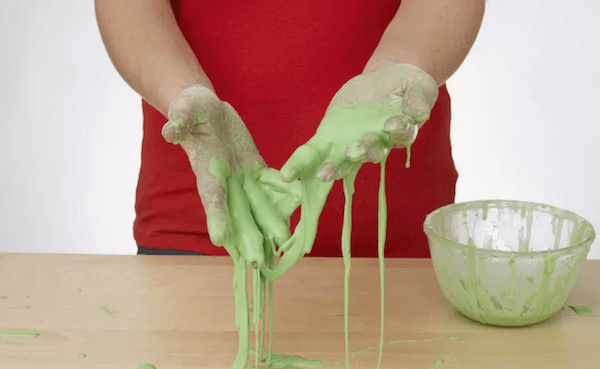
Need a fun STEM activity to do at home or in an after school club?
These 14 simple STEM activities can be done in 1 hour or less ! They only require simple ingredients and items that you can find at your grocery store (or already have at home!)
I’m a big fan of STEM bins. Purchase a simple craft box (these are my favorite storage bins for a playroom), and load them up with your old paper tubes, bubble wrap, and more so you always have cheap STEM activities on hand. Also, take a look at my article, 5 Ways to Use STEM Bins to Encourage Creative Thinking .
Table of Contents
14 STEM Activities You Can Do At Home Today
1. how to make slime.
All you need is some glue, borax, and water. Plus, add some food coloring for fun and creative designs. If you don’t already have borax, you can find it at any supermarket. Its a common cleaning agent.
What lesson can you teach by making slime? you may be asking. Well, its an example of a polymer , a large molecule made up of a chain of repeating units (monomers.) Discuss the properties of polymers for a little science lesson mixed into the fun.
Find the full slime recipe here .
2. Magic Milk Experiment
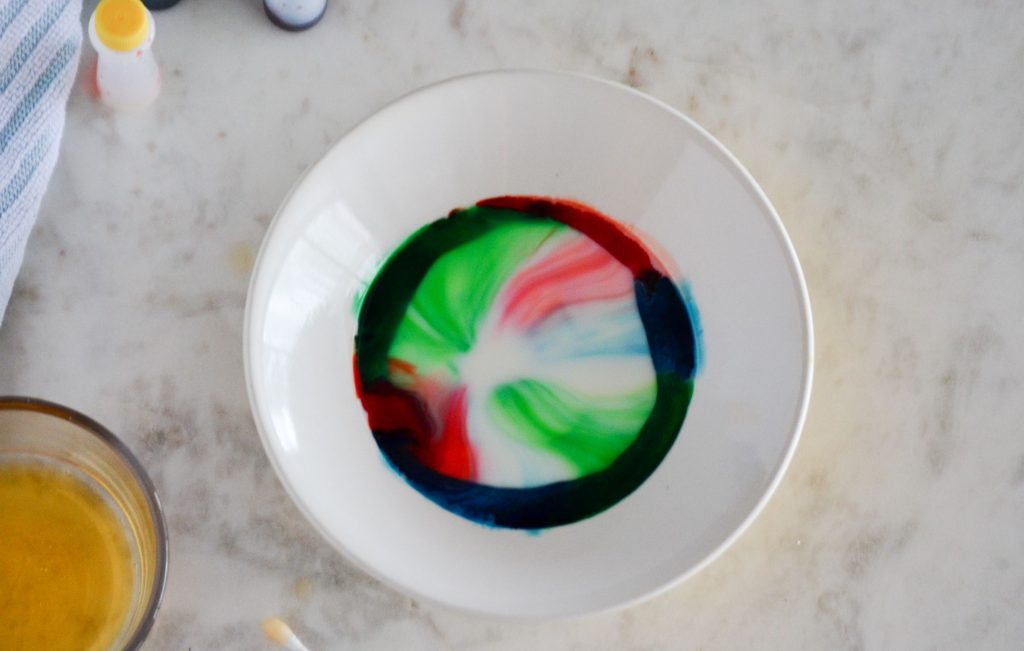
You can easily do this science experiment in 20 minutes. And, you probably already have everything you need to do it right now.
All you need is milk (2% or whole), food coloring, and dish soap.
Watch the exploding colors as the fat molecules separate once they come in contact with the soap.
3. Homemade Ice Cream in a Bag
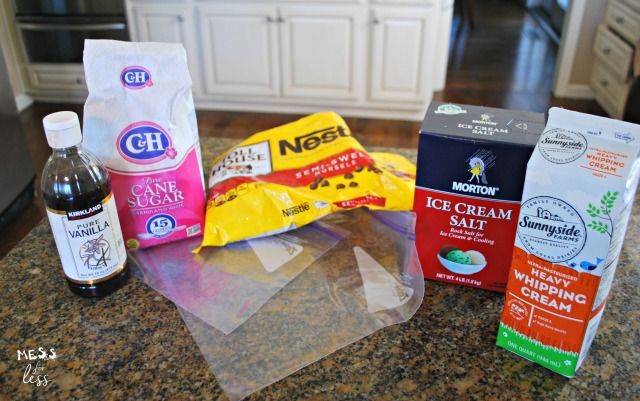
All you need for this activity is salt, ice, and either whipping cream (for really tasty ice cream) or milk. Then, add the toppings and flavors you love! Its a great opportunity to teach how different elements have different freezing and melting points. What happens when you add salt to the ice?
4. Make a Kaleidoscope
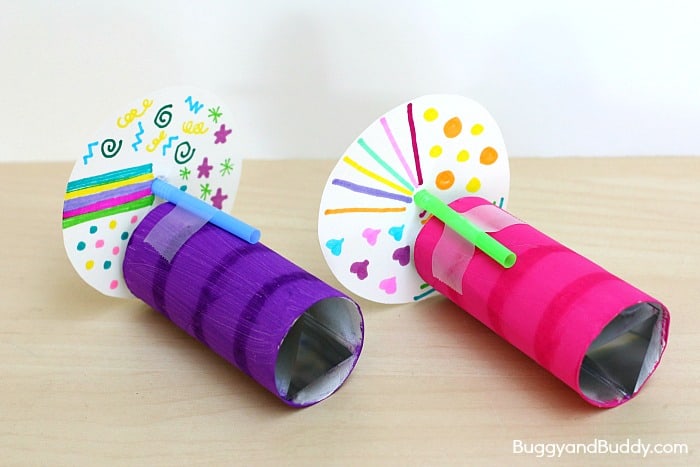
This activity puts the “A” in STEAM . Combine a bit of science with creative play by building these Kaleidoscopes. Its a great activity for preschool ages. Plus, once you make it, you can continue to use the Kaleidoscopes as a fun DIY toy. Simply use what you already have in your craft box for some fun designs. You will need a reflective “mirror” material to put into the tubes. We recommend these mirror sheets .
5. Create a Crystal Garden
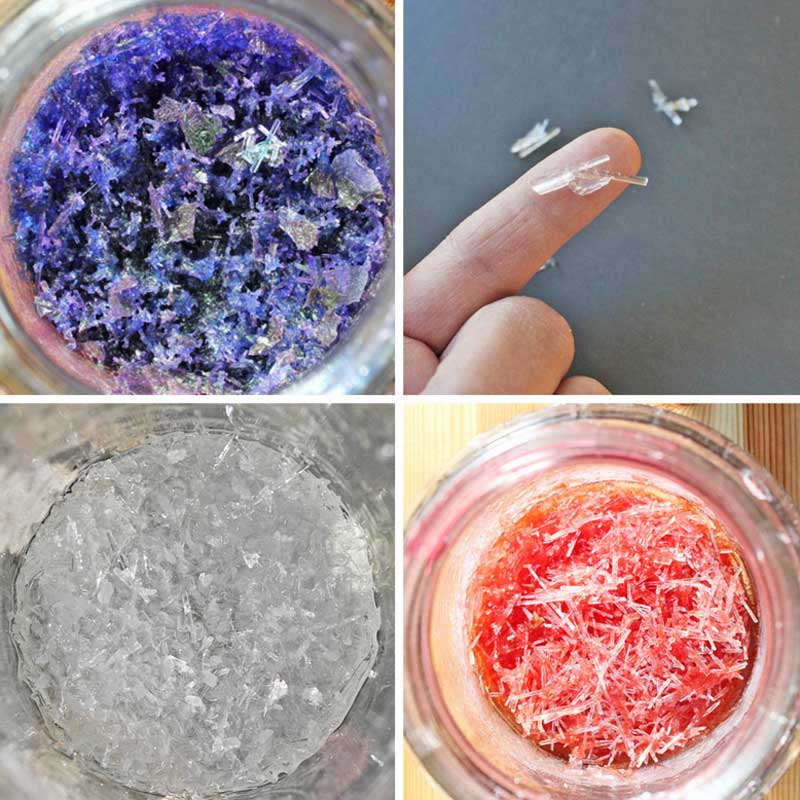
Borax or epsom salt make for easy, beautiful crystals grown overnight.
I also love this activity around Christmas time — use the same solutions on pipe cleaners for beautiful, simple crystal ornaments. Find the full instructions here .
6. Rocket Launcher with Straws
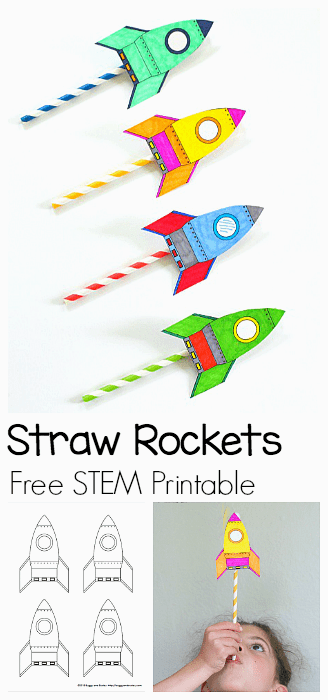
Download this free STEM printable for rocket ship designs. Simply add them to a straw and blast off! Easy activity than can be done in an hour at home. (But save some time to test your new rocket!)
7. Build Toothpick Bridges
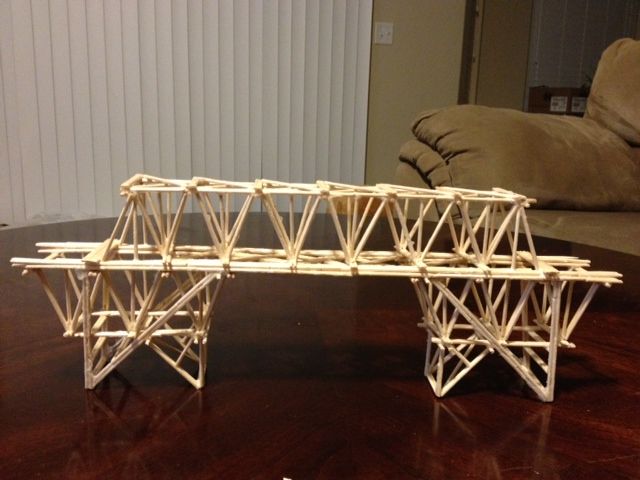
This is the classic engineering activity that even I did in school. All you need is toothpicks and glue. I recommend using some graph paper as well to layout your designs. What lessons can be taught with this STEM activity?
Well, once you build your bridge, you need to test it! Place the bridge over two tables, and then hang weights from the bridge. Slowly add on more weight to see which bridges can withstand the biggest load. (Hint: Bridges using triangles as their main structure are likely to win!) Kids will see first hand how different shapes and geometry impact the strength of a structure.
8. DIY Wind Cars
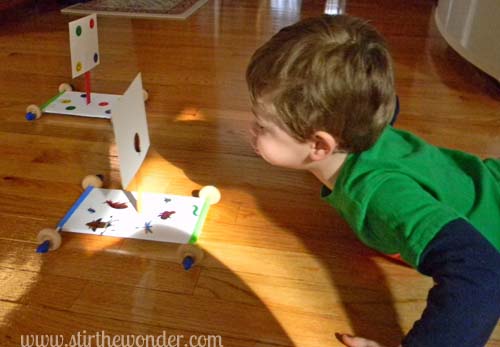
Unpack that STEM bin of yours and use what you’ve got! Pipe cleaners and tubes will all help you make an epic wind car. You can buy wooden wheels at a craft shop or simply dig out wheels from an old Lego set.
You can purchase wind car kits, but its just as easy to make one on your own for next to free!
9. Homemade Marble Runner
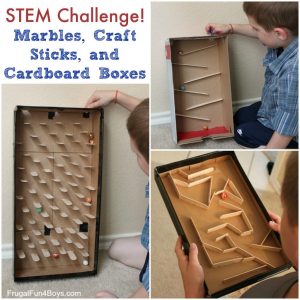
Some marble runners on the market are quite expensive, in my opinion. Great news? You can make your own at home! All you need is an old cardboard box lid, large popsicle sticks, and clue.
Create fun puzzles and mazes and let your marbles go off to the races!
10. Pizza Box Solar Oven
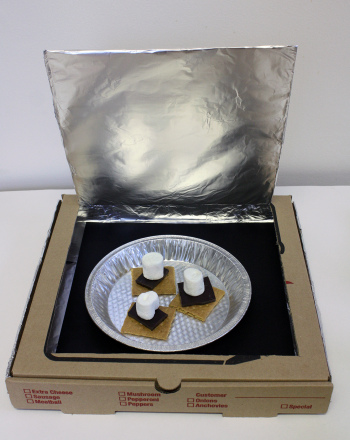
Show kids the power of green energy with these simple pizza box solar ovens. S’mores are a great food to start with in your solar oven, but then branch out from there to see exactly what your solar oven can make! (I recommend giving small Pita Pizzas a try in your solar oven too!)
11. DIY Lava Lamp
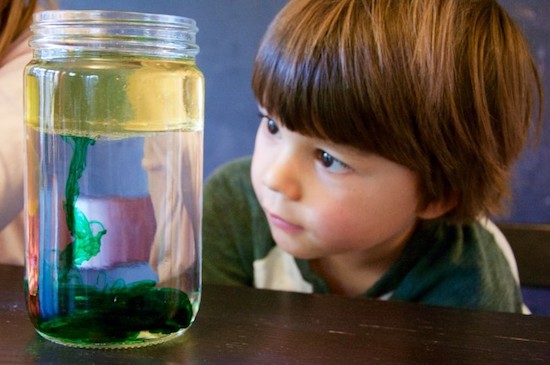
These cool lava lamps just require water, oil and either salt or antacid tablets. Learn about different density and the effects of it. The oil is more dense than the water so the water and oil won’t mix.
Drop in the antacid tables to get the bubble, lava lamp effect. Plus, a bit of food coloring makes it look great! You should have everything you need at home for this simple STEM activity.
12. Make Your Own Bath Bomb Experiment
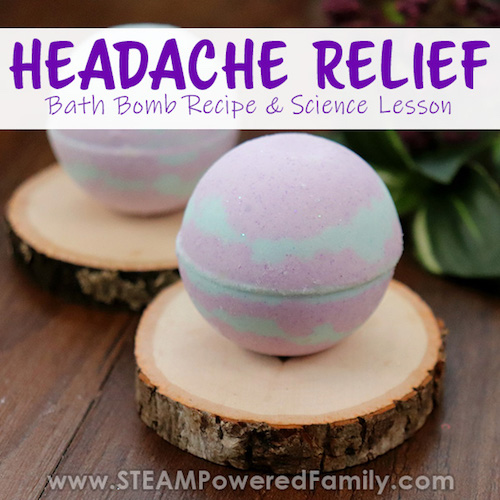
For this one, you likely don’t have all the supplies already at home. But making your own bath bombs — how awesome is that? It’s an activity both the kids and mom will love! The main ingredients are cornstarch and baking soda. You’ll also add some of your essential oils. You can change these up depending on the scent you want.
13. DIY Floam
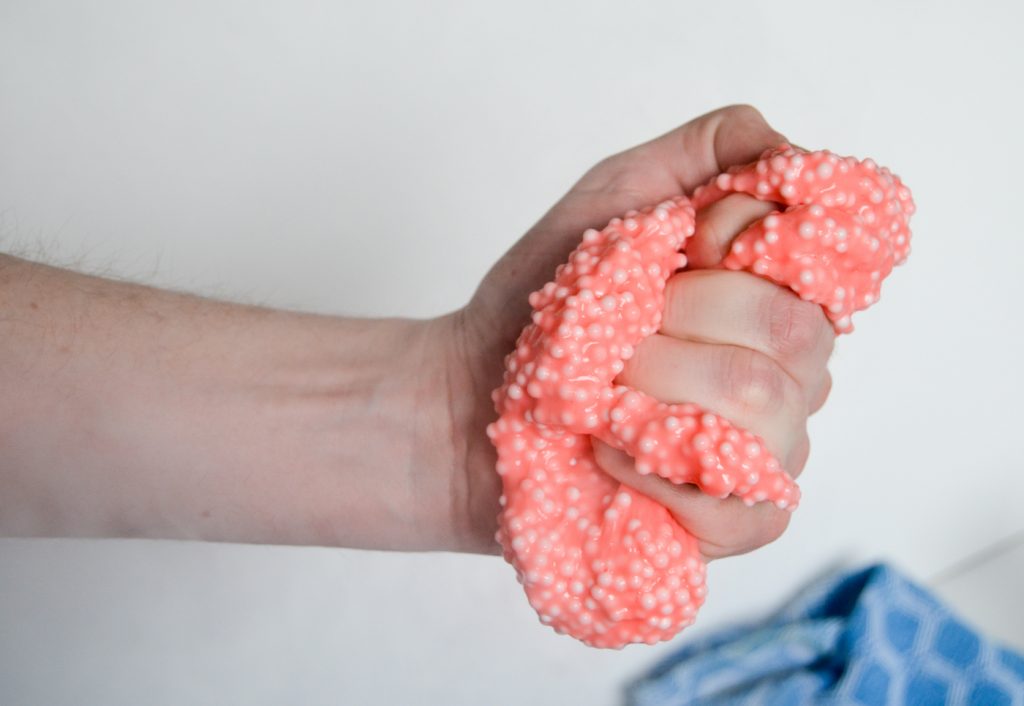
Loved the slime activity above? Then this homemade floam is perfect for your family! All you need is borax, glue, and some poly-fil beads (those tiny styrofoam beads in beanbag chair), and tah-dah! Your own homemade floam that you can play with for hours.
14. Coding a Lego Maze
Learning to code doesn’t need to involve more time in front of the screen – especially for young learners!
The first step is to think like a programmer and understand the command and logic sequences written when coding. This activity is perfect for developing those skills! Download the free printable here .
Wrapping Up
These simple STEM activities are great for a rainy or snowy day. I always recommend teaching a bit about the science behind each activity, rather its density, freezing points, or simply how light reflects! Your kids will love these activities, and not even know that they’re learning!
Looking for something that is themed for this Spring? Checkout our ultimate list of Spring STEM activities!
Leave a Comment Cancel reply
Save my name, email, and website in this browser for the next time I comment.
most recent
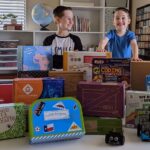
Activities and Games , Toy Gift Guides
Best stem subscription boxes for kids: hands-on reviews.

STEM Holiday Deals , Activities and Games , Science , Toy Gift Guides
How to choose a stem toy for every age kid.
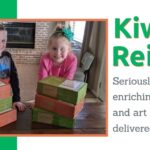
Product Reviews
Kiwico review: everything inside the crates (plus, 30% off coupon code).
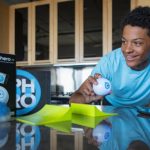
STEM Holiday Deals , Product Reviews
Best black friday deals for sphero.
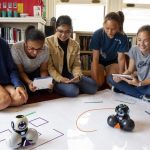
STEM Holiday Deals
Wonder workshop black friday deals (complete list of where and what to buy).
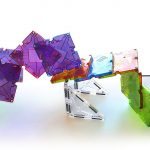
Product Reviews , Toy Gift Guides
Magna-tiles black friday deals: 2024.
STEM Education Guide
[email protected] STEM Education Guide 9125 SVL BOX Victorville, CA 92395
Your Compass for STEM Discovery
© 2024 STEM Education Guide

Choose Your Test
- Search Blogs By Category
- College Admissions
- AP and IB Exams
- GPA and Coursework
37 Cool Science Experiments for Kids to Do at Home
General Education
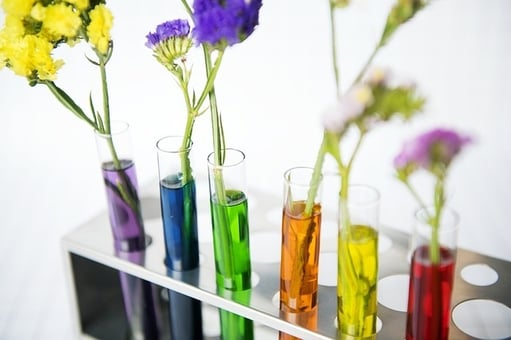
Are you looking for cool science experiments for kids at home or for class? We've got you covered! We've compiled a list of 37 of the best science experiments for kids that cover areas of science ranging from outer space to dinosaurs to chemical reactions. By doing these easy science experiments, kids will make their own blubber and see how polar bears stay warm, make a rain cloud in a jar to observe how weather changes, create a potato battery that'll really power a lightbulb, and more.
Below are 37 of the best science projects for kids to try. For each one we include a description of the experiment, which area(s) of science it teaches kids about, how difficult it is (easy/medium/hard), how messy it is (low/medium/high), and the materials you need to do the project. Note that experiments labelled "hard" are definitely still doable; they just require more materials or time than most of these other science experiments for kids.
#1: Insect Hotels
- Teaches Kids About: Zoology
- Difficulty Level: Medium
- Messiness Level: Medium
Insect hotels can be as simple (just a few sticks wrapped in a bundle) or as elaborate as you'd like, and they're a great way for kids to get creative making the hotel and then get rewarded by seeing who has moved into the home they built. After creating a hotel with hiding places for bugs, place it outside (near a garden is often a good spot), wait a few days, then check it to see who has occupied the "rooms." You can also use a bug ID book or app to try and identify the visitors.
- Materials Needed
- Shadow box or other box with multiple compartments
- Hot glue gun with glue
- Sticks, bark, small rocks, dried leaves, bits of yarn/wool, etc.
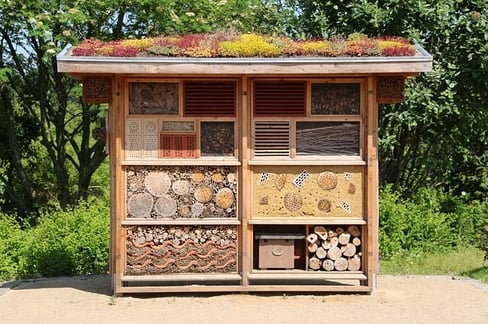
#2: DIY Lava Lamp
- Teaches Kids About: Chemical reactions
- Difficulty Level: Easy
In this quick and fun science experiment, kids will mix water, oil, food coloring, and antacid tablets to create their own (temporary) lava lamp . Oil and water don't mix easily, and the antacid tablets will cause the oil to form little globules that are dyed by the food coloring. Just add the ingredients together and you'll end up with a homemade lava lamp!
- Vegetable oil
- Food coloring
- Antacid tablets
#3: Magnetic Slime
- Teaches Kids About: Magnets
- Messiness Level: High (The slime is black and will slightly dye your fingers when you play with it, but it washes off easily.)
A step up from silly putty and Play-Doh, magnetic slime is fun to play with but also teaches kids about magnets and how they attract and repel each other. Some of the ingredients you aren't likely to have around the house, but they can all be purchased online. After mixing the ingredients together, you can use the neodymium magnet (regular magnets won't be strong enough) to make the magnetic slime move without touching it!
- Liquid starch
- Adhesive glue
- Iron oxide powder
- Neodymium (rare earth) magnet
#4: Baking Soda Volcanoes
- Teaches Kids About: Chemical reactions, earth science
- Difficulty Level: Easy-medium
- Messiness Level: High
Baking soda volcanoes are one of the classic science projects for kids, and they're also one of the most popular. It's hard to top the excitement of a volcano erupting inside your home. This experiment can also be as simple or in-depth as you like. For the eruption, all you need is baking soda and vinegar (dishwashing detergent adds some extra power to the eruption), but you can make the "volcano" as elaborate and lifelike as you wish.
- Baking soda
- Dishwashing detergent
- Large mason jar or soda bottle
- Playdough or aluminum foil to make the "volcano"
- Additional items to place around the volcano (optional)
- Food coloring (optional)
#5: Tornado in a Jar
- Teaches Kids About: Weather
- Messiness Level: Low
This is one of the quick and easy and science experiments for kids to teach them about weather. It only takes about five minutes and a few materials to set up, but once you have it ready you and your kids can create your own miniature tornado whose vortex you can see and the strength of which you can change depending on how quickly you swirl the jar.
- Glitter (optional)
#6: Colored Celery Experiment
- Teaches Kids About: Plants
This celery science experiment is another classic science experiment that parents and teachers like because it's easy to do and gives kids a great visual understanding of how transpiration works and how plants get water and nutrients. Just place celery stalks in cups of colored water, wait at least a day, and you'll see the celery leaves take on the color of the water. This happens because celery stalks (like other plants) contain small capillaries that they use to transport water and nutrients throughout the plant.
- Celery stalks (can also use white flowers or pale-colored cabbage)
#7: Rain Cloud in a Jar
This experiment teaches kids about weather and lets them learn how clouds form by making their own rain cloud . This is definitely a science project that requires adult supervision since it uses boiling water as one of the ingredients, but once you pour the water into a glass jar, the experiment is fast and easy, and you'll be rewarded with a little cloud forming in the jar due to condensation.
- Glass jar with a lid
- Boiling water
- Aerosol hairspray
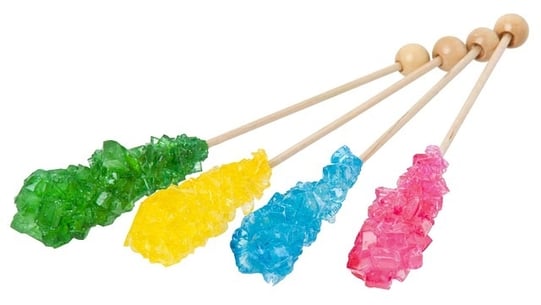
#8: Edible Rock Candy
- Teaches Kids About: Crystal formation
It takes about a week for the crystals of this rock candy experiment to form, but once they have you'll be able to eat the results! After creating a sugar solution, you'll fill jars with it and dangle strings in them that'll slowly become covered with the crystals. This experiment involves heating and pouring boiling water, so adult supervision is necessary, once that step is complete, even very young kids will be excited to watch crystals slowly form.
- Large saucepan
- Clothespins
- String or small skewers
- Candy flavoring (optional)
#9: Water Xylophone
- Teaches Kids About: Sound waves
With just some basic materials you can create your own musical instrument to teach kids about sound waves. In this water xylophone experiment , you'll fill glass jars with varying levels of water. Once they're all lined up, kids can hit the sides with wooden sticks and see how the itch differs depending on how much water is in the jar (more water=lower pitch, less water=higher pitch). This is because sound waves travel differently depending on how full the jars are with water.
- Wooden sticks/skewers
#10: Blood Model in a Jar
- Teaches Kids About: Human biology
This blood model experiment is a great way to get kids to visual what their blood looks like and how complicated it really is. Each ingredient represents a different component of blood (plasma, platelets, red blood cells, etc.), so you just add a certain amount of each to the jar, swirl it around a bit, and you have a model of what your blood looks like.
- Empty jar or bottle
- Red cinnamon candies
- Marshmallows or dry white lima beans
- White sprinkles
#11: Potato Battery
- Teaches Kids About: Electricity
- Difficulty Level: Hard
Did you know that a simple potato can produce enough energy to keep a light bulb lit for over a month? You can create a simple potato battery to show kids. There are kits that provide all the necessary materials and how to set it up, but if you don't purchase one of these it can be a bit trickier to gather everything you need and assemble it correctly. Once it's set though, you'll have your own farm grown battery!
- Fresh potato
- Galvanized nail
- Copper coin
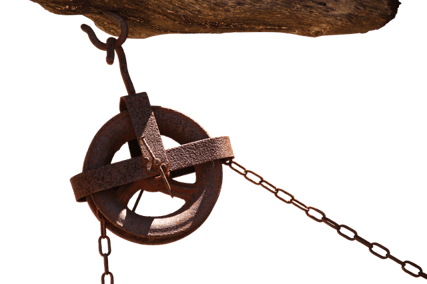
#12: Homemade Pulley
- Teaches Kids About: Simple machines
This science activity requires some materials you may not already have, but once you've gotten them, the homemade pulley takes only a few minutes to set up, and you can leave the pulley up for your kids to play with all year round. This pulley is best set up outside, but can also be done indoors.
- Clothesline
- 2 clothesline pulleys
#13: Light Refraction
- Teaches Kids About: Light
This light refraction experiment takes only a few minutes to set up and uses basic materials, but it's a great way to show kids how light travels. You'll draw two arrows on a sticky note, stick it to the wall, then fill a clear water bottle with water. As you move the water bottle in front of the arrows, the arrows will appear to change the direction they're pointing. This is because of the refraction that occurs when light passes through materials like water and plastic.
- Sticky note
- Transparent water bottle
#14: Nature Journaling
- Teaches Kids About: Ecology, scientific observation
A nature journal is a great way to encourage kids to be creative and really pay attention to what's going on around them. All you need is a blank journal (you can buy one or make your own) along with something to write with. Then just go outside and encourage your children to write or draw what they notice. This could include descriptions of animals they see, tracings of leaves, a drawing of a beautiful flower, etc. Encourage your kids to ask questions about what they observe (Why do birds need to build nests? Why is this flower so brightly colored?) and explain to them that scientists collect research by doing exactly what they're doing now.
- Blank journal or notebook
- Pens/pencils/crayons/markers
- Tape or glue for adding items to the journal
#15: DIY Solar Oven
- Teaches Kids About: Solar energy
This homemade solar oven definitely requires some adult help to set up, but after it's ready you'll have your own mini oven that uses energy from the sun to make s'mores or melt cheese on pizza. While the food is cooking, you can explain to kids how the oven uses the sun's rays to heat the food.
- Aluminum foil
- Knife or box cutter
- Permanent marker
- Plastic cling wrap
- Black construction paper
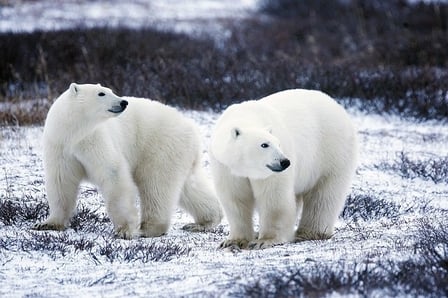
#16: Animal Blubber Simulation
- Teaches Kids About: Ecology, zoology
If your kids are curious about how animals like polar bears and seals stay warm in polar climates, you can go beyond just explaining it to them; you can actually have them make some of their own blubber and test it out. After you've filled up a large bowl with ice water and let it sit for a few minutes to get really cold, have your kids dip a bare hand in and see how many seconds they can last before their hand gets too cold. Next, coat one of their fingers in shortening and repeat the experiment. Your child will notice that, with the shortening acting like a protective layer of blubber, they don't feel the cold water nearly as much.
- Bowl of ice water
#17: Static Electricity Butterfly
This experiment is a great way for young kids to learn about static electricity, and it's more fun and visual than just having them rub balloons against their heads. First you'll create a butterfly, using thick paper (such as cardstock) for the body and tissue paper for the wings. Then, blow up the balloon, have the kids rub it against their head for a few seconds, then move the balloon to just above the butterfly's wings. The wings will move towards the balloon due to static electricity, and it'll look like the butterfly is flying.
- Tissue paper
- Thick paper
- Glue stick/glue
#18: Edible Double Helix
- Teaches Kids About: Genetics
If your kids are learning about genetics, you can do this edible double helix craft to show them how DNA is formed, what its different parts are, and what it looks like. The licorice will form the sides or backbone of the DNA and each color of marshmallow will represent one of the four chemical bases. Kids will be able to see that only certain chemical bases pair with each other.
- 2 pieces of licorice
- 12 toothpicks
- Small marshmallows in 4 colors (9 of each color)
- 5 paperclips
#19: Leak-Proof Bag
- Teaches Kids About: Molecules, plastics
This is an easy experiment that'll appeal to kids of a variety of ages. Just take a zip-lock bag, fill it about ⅔ of the way with water, and close the top. Next, poke a few sharp objects (like bamboo skewers or sharp pencils) through one end and out the other. At this point you may want to dangle the bag above your child's head, but no need to worry about spills because the bag won't leak? Why not? It's because the plastic used to make zip-lock bags is made of polymers, or long chains of molecules that'll quickly join back together when they're forced apart.
- Zip-lock bags
- Objects with sharp ends (pencils, bamboo skewers, etc.)
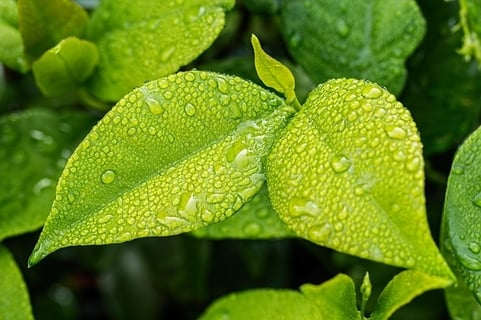
#20: How Do Leaves Breathe?
- Teaches Kids About: Plant science
It takes a few hours to see the results of this leaf experiment , but it couldn't be easier to set up, and kids will love to see a leaf actually "breathing." Just get a large-ish leaf, place it in a bowl (glass works best so you can see everything) filled with water, place a small rock on the leaf to weigh it down, and leave it somewhere sunny. Come back in a few hours and you'll see little bubbles in the water created when the leaf releases the oxygen it created during photosynthesis.
- Large bowl (preferably glass)
- Magnifying glass (optional)
#21: Popsicle Stick Catapults
Kids will love shooting pom poms out of these homemade popsicle stick catapults . After assembling the catapults out of popsicle sticks, rubber bands, and plastic spoons, they're ready to launch pom poms or other lightweight objects. To teach kids about simple machines, you can ask them about how they think the catapults work, what they should do to make the pom poms go a farther/shorter distance, and how the catapult could be made more powerful.
- Popsicle sticks
- Rubber bands
- Plastic spoons
- Paint (optional)
#22: Elephant Toothpaste
You won't want to do this experiment near anything that's difficult to clean (outside may be best), but kids will love seeing this " elephant toothpaste " crazily overflowing the bottle and oozing everywhere. Pour the hydrogen peroxide, food coloring, and dishwashing soap into the bottle, and in the cup mix the yeast packet with some warm water for about 30 seconds. Then, add the yeast mixture to the bottle, stand back, and watch the solution become a massive foamy mixture that pours out of the bottle! The "toothpaste" is formed when the yeast removed the oxygen bubbles from the hydrogen peroxide which created foam. This is an exothermic reaction, and it creates heat as well as foam (you can have kids notice that the bottle became warm as the reaction occurred).
- Clean 16-oz soda bottle
- 6% solution of hydrogen peroxide
- 1 packet of dry yeast
- Dishwashing soap
#23: How Do Penguins Stay Dry?
Penguins, and many other birds, have special oil-producing glands that coat their feathers with a protective layer that causes water to slide right off them, keeping them warm and dry. You can demonstrate this to kids with this penguin craft by having them color a picture of a penguin with crayons, then spraying the picture with water. The wax from the crayons will have created a protective layer like the oil actual birds coat themselves with, and the paper won't absorb the water.
- Penguin image (included in link)
- Spray bottle
- Blue food coloring (optional)
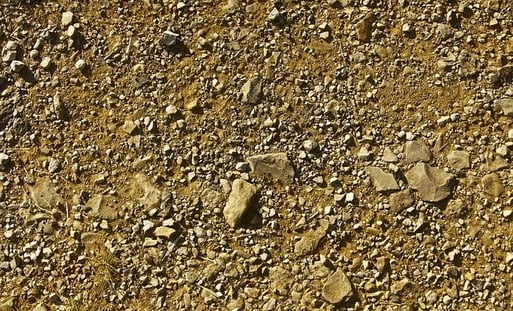

#24: Rock Weathering Experiment
- Teaches Kids About: Geology
This mechanical weathering experiment teaches kids why and how rocks break down or erode. Take two pieces of clay, form them into balls, and wrap them in plastic wrap. Then, leave one out while placing the other in the freezer overnight. The next day, unwrap and compare them. You can repeat freezing the one piece of clay every night for several days to see how much more cracked and weathered it gets than the piece of clay that wasn't frozen. It may even begin to crumble. This weathering also happens to rocks when they are subjected to extreme temperatures, and it's one of the causes of erosion.
- Plastic wrap
#25: Saltwater Density
- Teaches Kids About: Water density
For this saltwater density experiment , you'll fill four clear glasses with water, then add salt to one glass, sugar to one glass, and baking soda to one glass, leaving one glass with just water. Then, float small plastic pieces or grapes in each of the glasses and observe whether they float or not. Saltwater is denser than freshwater, which means some objects may float in saltwater that would sink in freshwater. You can use this experiment to teach kids about the ocean and other bodies of saltwater, such as the Dead Sea, which is so salty people can easily float on top of it.
- Four clear glasses
- Lightweight plastic objects or small grapes
#26: Starburst Rock Cycle
With just a package of Starbursts and a few other materials, you can create models of each of the three rock types: igneous, sedimentary, and metamorphic. Sedimentary "rocks" will be created by pressing thin layers of Starbursts together, metamorphic by heating and pressing Starbursts, and igneous by applying high levels of heat to the Starbursts. Kids will learn how different types of rocks are forms and how the three rock types look different from each other.
- Toaster oven
#27: Inertia Wagon Experiment
- Teaches Kids About: Inertia
This simple experiment teaches kids about inertia (as well as the importance of seatbelts!). Take a small wagon, fill it with a tall stack of books, then have one of your children pull it around then stop abruptly. They won't be able to suddenly stop the wagon without the stack of books falling. You can have the kids predict which direction they think the books will fall and explain that this happens because of inertia, or Newton's first law.
- Stack of books
#28: Dinosaur Tracks
- Teaches Kids About: Paleontology
How are some dinosaur tracks still visible millions of years later? By mixing together several ingredients, you'll get a claylike mixture you can press your hands/feet or dinosaur models into to make dinosaur track imprints . The mixture will harden and the imprints will remain, showing kids how dinosaur (and early human) tracks can stay in rock for such a long period of time.
- Used coffee grounds
- Wooden spoon
- Rolling pin
#29: Sidewalk Constellations
- Teaches Kids About: Astronomy
If you do this sidewalk constellation craft , you'll be able to see the Big Dipper and Orion's Belt in the daylight. On the sidewalk, have kids draw the lines of constellations (using constellation diagrams for guidance) and place stones where the stars are. You can then look at astronomy charts to see where the constellations they drew will be in the sky.
- Sidewalk chalk
- Small stones
- Diagrams of constellations
#30: Lung Model
By building a lung model , you can teach kids about respiration and how their lungs work. After cutting off the bottom of a plastic bottle, you'll stretch a balloon around the opened end and insert another balloon through the mouth of the bottle. You'll then push a straw through the neck of the bottle and secure it with a rubber band and play dough. By blowing into the straw, the balloons will inflate then deflate, similar to how our lungs work.
- Plastic bottle
- Rubber band
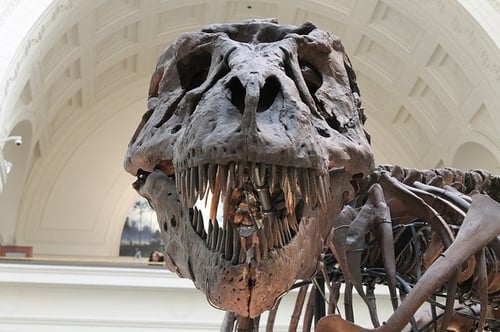
#31: Homemade Dinosaur Bones
By mixing just flour, salt, and water, you'll create a basic salt dough that'll harden when baked. You can use this dough to make homemade dinosaur bones and teach kids about paleontology. You can use books or diagrams to learn how different dinosaur bones were shaped, and you can even bury the bones in a sandpit or something similar and then excavate them the way real paleontologists do.
- Images of dinosaur bones
#32: Clay and Toothpick Molecules
There are many variations on homemade molecule science crafts . This one uses clay and toothpicks, although gumdrops or even small pieces of fruit like grapes can be used in place of clay. Roll the clay into balls and use molecule diagrams to attach the clay to toothpicks in the shape of the molecules. Kids can make numerous types of molecules and learn how atoms bond together to form molecules.
- Clay or gumdrops (in four colors)
- Diagrams of molecules
#33: Articulated Hand Model
By creating an articulated hand model , you can teach kids about bones, joints, and how our hands are able to move in many ways and accomplish so many different tasks. After creating a hand out of thin foam, kids will cut straws to represent the different bones in the hand and glue them to the fingers of the hand models. You'll then thread yarn (which represents tendons) through the straws, stabilize the model with a chopstick or other small stick, and end up with a hand model that moves and bends the way actual human hands do.
- Straws (paper work best)
- Twine or yarn
#34: Solar Energy Experiment
- Teaches Kids About: Solar energy, light rays
This solar energy science experiment will teach kids about solar energy and how different colors absorb different amounts of energy. In a sunny spot outside, place six colored pieces of paper next to each other, and place an ice cube in the middle of each paper. Then, observe how quickly each of the ice cubes melt. The ice cube on the black piece of paper will melt fastest since black absorbs the most light (all the light ray colors), while the ice cube on the white paper will melt slowest since white absorbs the least light (it instead reflects light). You can then explain why certain colors look the way they do. (Colors besides black and white absorb all light except for the one ray color they reflect; this is the color they appear to us.)
- 6 squares of differently colored paper/cardstock (must include black paper and white paper)
#35: How to Make Lightning
- Teaches Kids About: Electricity, weather
You don't need a storm to see lightning; you can actually create your own lightning at home . For younger kids this experiment requires adult help and supervision. You'll stick a thumbtack through the bottom of an aluminum tray, then stick the pencil eraser to the pushpin. You'll then rub the piece of wool over the aluminum tray, and then set the tray on the Styrofoam, where it'll create a small spark/tiny bolt of lightning!
- Pencil with eraser
- Aluminum tray or pie tin
- Styrofoam tray
#36: Tie-Dyed Milk
- Teaches Kids About: Surface tension
For this magic milk experiment , partly fill a shallow dish with milk, then add a one drop of each food coloring color to different parts of the milk. The food coloring will mostly stay where you placed it. Next, carefully add one drop of dish soap to the middle of the milk. It'll cause the food coloring to stream through the milk and away from the dish soap. This is because the dish soap breaks up the surface tension of the milk by dissolving the milk's fat molecules.
- Shallow dish
- Milk (high-fat works best)
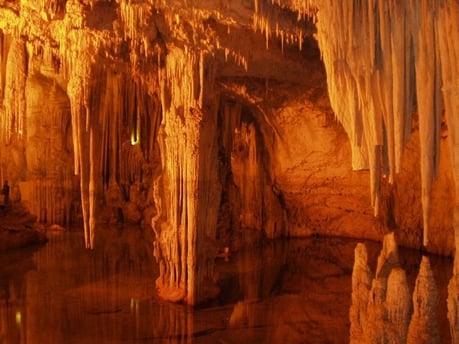
#37: How Do Stalactites Form?
Have you ever gone into a cave and seen huge stalactites hanging from the top of the cave? Stalactites are formed by dripping water. The water is filled with particles which slowly accumulate and harden over the years, forming stalactites. You can recreate that process with this stalactite experiment . By mixing a baking soda solution, dipping a piece of wool yarn in the jar and running it to another jar, you'll be able to observe baking soda particles forming and hardening along the yarn, similar to how stalactites grow.
- Safety pins
- 2 glass jars
Summary: Cool Science Experiments for Kids
Any one of these simple science experiments for kids can get children learning and excited about science. You can choose a science experiment based on your child's specific interest or what they're currently learning about, or you can do an experiment on an entirely new topic to expand their learning and teach them about a new area of science. From easy science experiments for kids to the more challenging ones, these will all help kids have fun and learn more about science.
What's Next?
Are you also interested in pipe cleaner crafts for kids? We have a guide to some of the best pipe cleaner crafts to try!
Looking for multiple different slime recipes? We tell you how to make slimes without borax and without glue as well as how to craft the ultimate super slime .
Want to learn more about clouds? Learn how to identify every cloud in the sky with our guide to the 10 types of clouds .
Want to know the fastest and easiest ways to convert between Fahrenheit and Celsius? We've got you covered! Check out our guide to the best ways to convert Celsius to Fahrenheit (or vice versa) .
Trending Now
How to Get Into Harvard and the Ivy League
How to Get a Perfect 4.0 GPA
How to Write an Amazing College Essay
What Exactly Are Colleges Looking For?
ACT vs. SAT: Which Test Should You Take?
When should you take the SAT or ACT?
Get Your Free

Find Your Target SAT Score
Free Complete Official SAT Practice Tests
How to Get a Perfect SAT Score, by an Expert Full Scorer
Score 800 on SAT Math
Score 800 on SAT Reading and Writing
How to Improve Your Low SAT Score
Score 600 on SAT Math
Score 600 on SAT Reading and Writing
Find Your Target ACT Score
Complete Official Free ACT Practice Tests
How to Get a Perfect ACT Score, by a 36 Full Scorer
Get a 36 on ACT English
Get a 36 on ACT Math
Get a 36 on ACT Reading
Get a 36 on ACT Science
How to Improve Your Low ACT Score
Get a 24 on ACT English
Get a 24 on ACT Math
Get a 24 on ACT Reading
Get a 24 on ACT Science
Stay Informed
Get the latest articles and test prep tips!

Christine graduated from Michigan State University with degrees in Environmental Biology and Geography and received her Master's from Duke University. In high school she scored in the 99th percentile on the SAT and was named a National Merit Finalist. She has taught English and biology in several countries.
Ask a Question Below
Have any questions about this article or other topics? Ask below and we'll reply!
Free Shipping on orders over $50 | Orders after Dec 13th not guaranteed pre-Christmas delivery
Subscription Lines
Global Store
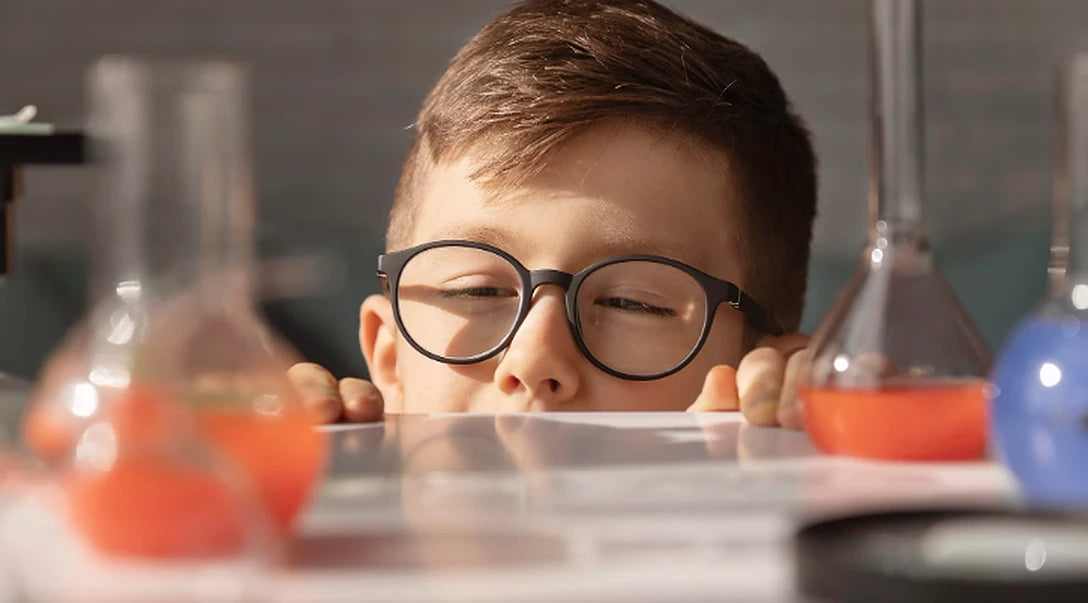
15 Cool Science Projects Your Kids Can Do at Home
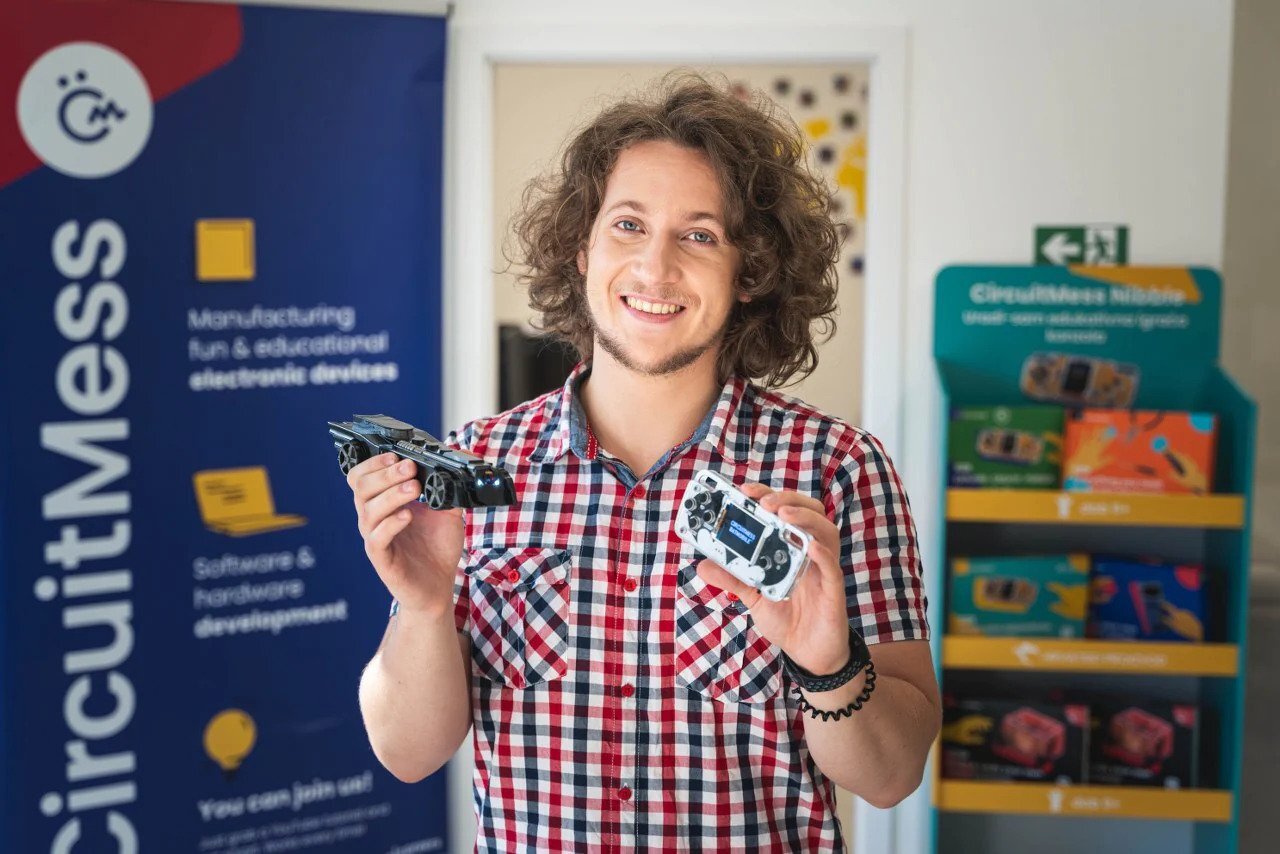
Sign up for a 10% off your first purchase
Read stories how our founder Albert turned his childhood passion into CircuitMess, and get exciting DIY project ideas you can do with your kids at home for free.
Table of content
You're trying to find fun science experiments for your kids? Luckily, there are hundreds of different science projects for kids - and a lot of them can be done with just a few simple ingredients.
To help you get your kids involved in simple science experiments, we've created a list of the best science experiments for kids that can be done with ingredients you already have at home.
Almost every one of these science experiments can be finished in less than an hour (there are some lengthy ones), and the ingredients are already at your disposal.
From dish soap to vegetable oil and baking soda - these simple ingredients will help your kids learn all about the scientific method. What's even better, these easy science experiments are great for inspiring them to dive deeper into STEM sciences - and we 100% support that!
Now, without further ado, let's dive in.
Why do kids love doing science experiments?
There are several reasons why kids (and often parents) love to dive into a science experiment.
Firstly, these experiments are fun. Often, there are colorful chemicals involved, some interesting reactions can be seen, and the outcomes are surprising in most cases.
And these fun science experiments usually stoke the kids' creativity and problem-solving skills. In one of these 20 kid friendly science experiments, they'll need to either design and build something, form their own assumptions, and fix issues that may occur during the experiment.
These are perfect scenarios for young kids, where they'll learn what makes our world and how they can shape it.
The biggest reason behind this love for science projects is kids' natural curiosity. These simple at-home science experiments provide kids with opportunities to discover how things work. They'll ask you questions, they'll carefully observe what happens, and even probably come up with their own explanations.
The main point to make here is that kids are endlessly creative and curious. They only need guidelines and the materials, the rest of the magic is up to them.
How can fun science experiments help kids develop?
Engaging kids in science projects from early age can have a tremendous impact on their life skills.
Whenever there is something they don't understand, they'll question it, investigate it, do some research, and come up with their own explanations. Their imagination is unlimited, but they still need guidance. And science will help them look at the world through a different lens.
Here's what to expect if you engage your kids in science activities.
Their research skills improve
Science experiments are hugely beneficial for young kids. They get the opportunity to improve their research skills and to understand what kind of research is required for a different subject.
You may think that this mainly applies to science and other STEM fields, but it's much more applicable than that.
Well-developed research skills will help your kids master subjects like history, economics, and many other. The skill to do their own research and question their findings is invaluable.
Their creativity is fueled
Even though creativity may not be at the top of our mind when we mention science projects for kids, such experiments work wonders for broadening your kids' horizons.
Whenever they face a new challenge, they'll be able to look at the problem from a different angle, deal with a tough situation, and discover a new way to succeed.
They can think outside the box
Thinking outside the box is one of the greatest benefits of early STEM education. If a science experiment fails, kids will have no option than to look for a new solution.
This could mean starting the experiment over from the beginning or adjusting the process a bit. If they fail once, they'll try again. And if that fails, they'll give it one more go. This rinse-and-repeat process will continue as long as they don't succeed with their experiment.
Such out-of-the-box thinking and perseverance are incredibly helpful in all aspects of life, not just science experiments.
They start paying attention to details
Detail-oriented thinking is something all of us can benefit from. And by engaging your kids in cool science experiments and teaching them simple science concepts, they can develop that skill early in life.
Whether your kids are researching a new science method, experimenting with a simple science project, or learning new skills - the attention to detail is what helps them discover solutions and solve problems.
15 coolest science projects for kids to do at home
To help you and your kids get started with some of the best science experiments, we've rounded up the 15 coolest science experiments. They will help you teach kids about different chemical reactions, air pressure, and many other scientific phenomenon.
Let's dive in.
#1 Create a homemade lava lamp
Let's start with a classic science experiment. The homemade lava lamp experiment is one of the easiest one on the list - and it's a huge hit with young kids.
In this experiment, they'll learn about the density of different liquids and about some basic chemical reactions.

Image source: https://www.mkewithkids.com/
What do you need for this experiment?
Here's a list of tools and ingredients you'll need:
A clear glass or a transparent container (glass jar or a drinking glass)
Cooking oil (vegetable oil or canola oil)
Food coloring
Baking soda
Steps to complete the experiment
Step 1: First, set up the workplace and find a clean, flat surface you can work on. Also, be sure to place some old newspapers or a tray underneath the glass.
Step 2 : ill your glass container about one-quarter full with water.
Step 3 : Add a dew drops of food coloring in the glass - the color choice is up to you.
Step 4 : Fill up your colored water container with cooking oil and fill it to the top. Leave just a small gap on top.
Step 5 : When the colored water and oil separate, add a pinch of baking soda.
Once you do this, you'll see bubbles rising to the surface of the oil, even carrying some of the colored water to the top. Once these bubbles reach the top of the container, they'll pop and the colored water will sink back down.
This creates a simple lava lamp effect, with colorful bubbles going up and down in the container.
P.S. Try experimenting by adding even more baking soda, pay close attention to how the number and size of bubbles changes.
#2 Grow your own crystals
This science experiment is one of the sweetest ones. And that's for a good reason, since sugar is our main ingredient. The best thing about this experiment is - these crystals are 100% edible (and tasty!)
These sugar crystals will form as a result of a supersaturated solution, containing more sugar than could be dissolved in water under normal conditions. The sugar molecules, in this case, have a higher chance of bumbing into one another since there is less space for them to move around.
Then the molecules start sticking together. And if there's something these molecules can cling to, crystals will form in no time. This simple experiment is fun and the end result is edible, so - why not give a try?

Image source: https://littlebinsforlittlehands.com/
Here's a list of basic supplies you'll need:
Edible glitter
Step 1: First, cut a piece of string that's around the same length as your glass jar. Tie one end of the string to a straw and tie a know in the other end. Get the string wet and coat in sugar. Once that is done, let it dry overnight.
Step 2: Add 4 cups of sugar and 1 cup of water into a saucepan. Heat the saucepan until water starts boiling. By heating the water, sugar will dissolve and we'll be a step closer to making a supersaturated solution.
Step 3 : Stir until the sugar is dissolved, but don't heat it too much. Keep the temperature at around 100°C
Step 4 : Remove the sugar from the heat and pour it into your glass jar. Add edible food coloring and some edible glitter.
Step 5 : Lower the string into the glass jar and leave it for a week. Once the sugar crystals are fully formed, remove them and place them on paper towels. They'll need to dry for a few hours.
And that's it! You can now use a magnifying glass or even a microscope to inspect your crystals. Give it a shot and think about what can you see with your eyes, and what you can see with a magnifying glass.
#3 The classic baking soda and vinegar volcano
The baking soda and vinegar volcano is a classic science experiment that easily captivates kids' attention, regardless of their age. And once they see it erupt once, they'll want to do it again.
Luckily, you'll need only some basic materials and just a few minutes to prepare.

Image source: https://www.treehugger.com/
To do this, you'll need just a few simple ingredients:
Plastic cup
Food coloring (or washable paint)
Step 1: Pour water into your plastic cup, fill it about 2/3 full
Step 2: Add 4 tablespoons of baking soda, 1 tablespoon of dish soap, and a bit of food coloring. We recommend you do this outside, since it's a bit messy experiment. Or use washable paint instead of food coloring if you'll do this inside.
Step 3 : Stir the ingredients in the plastic cup and start pouring vinegar until it starts foaming.
The more vinegar and baking soda you add, the more intense the chemical reaction will be. And if you want to build something even bigger with your kids, try using clay or plasticine to build a small volcano around your plastic cup. It will look much cooler!
#4 Elephant toothpaste
Elephant toothpaste is easily one of the best science experiments for kids. They'll get to learn about catalysts, chemical reactions, and have a lot of fun doing it. Keep in mind, this science experiment requires an adult involved, since a harmful liquid is an essential ingredient.
It's a simple science experiment that requires just a few simple materials you already have at home - and one interesting liquid you'll probably need to buy.

Image source: https://www.weareteachers.com/
Here's a list of ingredients you'll need:
Plastic soda bottle
20-volume of 6% solution hydrogen peroxide liquid
Liquid dish soap
Safety goggles (highly recommended)
Step 1: The first thing you should do is - put on some protective eyewear. Hydrogen peroxide can irritate both skin and eyes, so it should be best to avoid these problems from the start.
Step 2 : Now, add 8 drops of food coloring and 1 tablespoon of dish soap into the soda bottle and mix the ingredients.
Step 3: In a separate plastic cup, mix warm water and yeast for around 30 seconds.
Step 4 : Once you've done that, pour the yeast water mixture into the bottle.
And now, this simple chemical reaction takes place and the foam starts forming quickly. The yeast worked as a catalyst to remove oxygen from the hydrogen peroxide. Since a lot of oxygen was removed very quickly, a lot of bubbles appeared.
You'll notice that the bottle got really hot. This happened since this is an exothermic reaction, meaning the heat from this mixture gets released into the surroundings.
And when you're finished with this science project, you can safely pour the foam down the drain. It's made up of only water, soap, and oxygen, so there will be no harm whatsoever.
#5 The Rainbow Jar
The rainbow jar experiment is one of the easy science experiments that don't require a lot of preparation. It's great for teaching kids about different liquids, their densities, and get them interested in science activities.
The ingredient list is extremely simple and it includes mainly everyday materials you already have at home.

Image source: https://www.superteacherworksheets.com/
Here's what you need for this science experiment:
A clear glass or a transparent container (look for tall and narrow containers)
6 small cups
Cooking oil
Blue food coloring
Purple grape juice
Step 1 : The first thing you should do is prepare all the liquid you'll need. Pour each one into a separate small cup. Each of them is going to represent a different layer of the rainbow.
Step 2: Start by pouring honey at the bottom of the glass. Keep in mind, there will be 5 more liquids in this glass, so don't fill up too much. Honey will serve as a red layer of the rainbow.
Step 3: Next, gently pour dish soap on the top of the red layer. For better precision, you can use a pipette, but if you don't have one at hand, it's no problem. Dish soaps come in various colors, but if possible, an orange one would work great with this experiment. the top of the previous layer, add the cooking oil. It will form a yellow layer.
Step 4 : Now, pour water slowly on the top of the yellow oil layer. As you add water, be cautious not to disturb the layers below.
Step 5 : Once you've poured the water, add just a few drops of blue food coloring to the wayer layer.
Step 6: Finally, pour purple grape juice on the top of the blue layer.
When all the layers are in place, you'll have a beautiful rainbow jar in front of you. This is a great opportunity to teach kids about liquid density and why some colors mix while others stay separate.
#6 Host an egg drop
This simple experiment is a huge hit with kids - and definitely one of our favorite science experiments on this list. It will help you engage your kids in a thrilling activity that challenges kids to learn about gravity, force, and even some basic principles of engineering. Overall, a great STEM activity!
In this science experiment, kids will need to protect an egg from cracking when dropped from height. It's not an easy thing to do, but it's most certainly fun and entertaining. This is a great opportunity to gather your kids' friends and have them engage in this activity together.

Image source: https://buggyandbuddy.com/
Here's a list containing the everyday materials you'll need:
An egg (probably a few)
Bubble wrap
Cotton balls
Rubber bands
Step 1 : Start by choosing your protective materials. You don't need to choose all of them from the list above, of course. Mix different items from the list to design a safeguard for your egg.
Step 2 : Carefully place the egg in the center of your materials and start wrapping them around the egg. Make sure that the egg is well-protected on all sides (rubber bands and tape are quite useful for this.)
Step 3 : And once you're satisfied with the egg armor, trim any excess materials with scissors.
Step 4 : Finally, here's the exciting part. Find a space around your home (preferrably outdoors) to perform the egg drop. Now, all you need to do is - hold the egg above the chosen spot and let it go.
Now, did it crack? What worked well? What could be improved in the next try? Maybe different materials? Or better material distribution? The kids learn about engineering principles right on the spot, they'll quickly adapt, and create a better version in no time.
So, make sure you have enough of the protective materials - and enough eggs!
#7 Create Oobleck - a non-Newtonian liquid (you have the ingredients at home)
Prepare to be amazed by Oobleck, a non-Newtonian liquid that can be created much faster and easier than you'd think. It defies the laws of classical physics and for that reason alone, it's on our list of favorite science experiments for kids.
It behaves as both liquid and solid, but it's actually neither. It's one of the best hands-on science experiments for kids, regardless of their age. Even us adults get surprised when we figure out that we can create non-Newtonian fluids in just a few minutes.

Image source: https://hip2save.com/
Here's what you'll need to create Oobleck:
Mixing bowl
Food coloring (if you want it in different colors)
Step 1: Take a mixing bowl and fill it with water and cornstarch. If you're using 1 cup of water, use 2 cups of cornstarch. This 1:2 ratio should always be applied.
Step 2 : Mix in a few drops of food coloring before combining water with cornstarch (this is optional.)
Step 3 : Stir the mixture thoroughly until all ingredients are well-mixed. If the consistency seems to be too thick, add some water. Or if seems to be a bit runny, add more cornstarch.
And that's it - you've just created a non-Newtonian liquid! Notice how it works - if you apply gentle force, it will feel like a liquid. But if you try to, let's say, hit it or squeeze it, it will behave like a solid.
While it is extremely fun to experiment with, Oobleck can make things a bit messy. It's best to keep it away from carpets and other surfaces that may be hard to clean.
Also - Oobleck can be reused. Just store it in an airtight container and use it whenever you want. Oobleck shows us how science experiments can at the same time be exciting and puzzling - and that's why we love science.
#8 Set up a Rube Goldberg machine (easier than it sounds)
When we say "Rube Goldberg machine", you may think of it as a complex science experiment, but in reality, it's easier to create than you think. It involves creating a series of simple actions that eventually get combined - and trigger a fun chain reaction.
Here's just an example of what it could look like.
Here's the list:
Household items like dominoes, toy cars, marbles, balls, books, and whatever you can think of
Cardboard ramps (or even wooden ramps)
A lot of imagination
Step 1: Take some time to think about what you want your machine to do. It can be as complex as you like, so the best course of action is to sketch the event sequences on a paper, so you have a rough idea of how it will work.
Step 2 : Gather all the materials! This is step is limited only by your imagination. Think about how each item can be used - dominoes, toy cars, marbles, books, cups, strings, tape, cardboard, wooden blocks, balloons, toy trains, popsicle sticks, plastic cups, rubber bands, kitchen utensils, balls, and so on. There's really no limit.
Step 3 : Now, it's time to set up our first sequence. You'll want to look for a stable starting point first. For example, as a starting point you can use a toy car on a ramp, a marble on a track, or anything similar. And be sure to use tape to secure all items in place.
Step 4 : Before you continue adding ramps, tracks, and other items to your machine, you'll need to test it. After a test run or two, you'll know what needs to be fixed, readjusted, or replaced. Tweak your sequence until it works perfectly.
Step 5: Add as many ramps, tracks, and other household items to your machine. Including more cardboard and wooden ramps will give your objects more momentum - and prolong the sequence. The chain reaction will look even more captivating.
The thing with the Rube Goldberg machine is - it can go on forever. So, take your time, build a huge sequence, and ensure each element leads smoothly into the next one.
#9 Create your own gaming consoles (it really works)
Playing video games as a kid is fun. But building your own gaming console easily tops that.
At CircuitMess, we've created various DIY kits for kids that will help them with science learning, provide them with hands-on STEM experience, and help them gain future-proof skills.
And one of our most fun projects to date is the - DIY gaming console .
Whether you're child is in elementary or middle school, this is the perfect kit for getting them interested in robotics and engineering - at an affordable price!
For this cool project, you'll need to have:
CircuitMess Nibble parts and components
Desoldering vacuum tool (optional)
Solder wick
Unlike with the previous experiments, this one requires a bit more serious equipment. Still, it's easily accessible and you can get all the essentials directly from us in the DIY gaming console bundle!
Building your Nibble gaming console is a complex process, but an enjoyable one.
There are many steps required, so to help make it easier, we've created a build guide for our gaming console .
Visit the link and find out everything you need to know.
#10 Build a robot from scratch
Does building a robot sound cool enough? We're absolutely sure it does!
Wacky Robots are one of our coolest DIY kits for kids aged 7 and above. This simple DIY kit will help teach your kids about electronics and build confidence to tackle other challenges with persistence and tenacity.
This is the perfect hands-on experiment for any kid - there's no previous knowledge or experience required. And you can get all the required parts, components, and guides for $29.99.
There are various Wacky Robots in our DIY subscription, and each month, your kids will get a new science project to complete. So, each month, your kids will have the chance to learn about different aspects of science, engineering, and electronics.
Plus, it's incredibly fun.
To assemble your robot from scratch, you'll need to get the Wacky Robots DIY kit - and that's it! You get all the parts, tools, and components in the box.
There are several steps to building a Wacky Robot. At this moment, we're shipping out DUSTY, a beginner-friendly robot kit that will teach kids about electronics and photoresistors.
To make the entire process easier, here's a step-by-step tutorial on how to build DUSTY!
#11 Magic milk
Unlike the previous two, the Magic Milk is a bit easier one, and definitely one of the classic science experiments for kids.
It's great for teaching kids about chemistry basics and surface tension - and it looks really cool once it's finished.
Let's take a look at what kind of supplies you'll need.

For this experiment, you'll need:
Small bowls
Cotton swabs
A tray or a shallow container
Step 1: Pour milk into a shallow tray or container and make sure it covers the bottom evenly.
Step 2 : Add a few drops of different food coloring to the milk (combine various colors to create a more vibrant effect - i.e. blue, yellow, and red food coloring will do the trick)
Step 3 : Dip a cotton swab into the dish soap.
Step 4 : Gently touch the surface of the milk with the cotton swab.
Step 5 : Repeat as many times as you like.
You'll notice that the food coloring will start to move and swirl around, creating stunning patterns. Now, how and why does this work?
Milk contains fat molecules that naturally repel water, so when you add the dish soap, the surface tension of the milk breaks and fat molecules scatter around the container. As the soap touches the surface, it affects the surface differently in each spot.
And just a tip - if you want a more magical effect, try using 5-6 different colors - or even try using complementary colors.
#12 The Skittles experiment
This is one of the easy science experiments for kids - and one of the sweeter ones.
It's a great way for them to learn about solubility and it's simply entertaining, as colors mix on the plate in a magical way.
Toddlers and preschool kids will surely enjoy this one and it takes just a few minutes to perform.

Image source: https://www.science-sparks.com/
Here are all the simple supplies you'll need:
Skittles candy of different colors
A white dish plate
A stopwatch
Step 1: Arrange the Skittles candy in a circle on your white dish plate. Mix different colors to get a more vibrant effect in the end.
Step 2 : Pour warm water over Skittles until they are covered in water. Be careful not to add too much water.
Step 3 : Track time with your stopwatch and look at how Skittles begin to dissolve in the water and spread outwards.
Now, why does this work?
It's incredibly simple. The colored sugar dissolves in water and as the water level rises - colors blend together and create a beautiful rainbow pattern.
#13 Egg and vinegar experiment
This fun experiment will teach your kids about the power of acids and their ability to dissolve calcium carbonate, the main ingredient of eggshells.
Let's go through everything you need to know!
And before we start, check out the image below. On the left, you can see what the egg looks like when the experiment is finished.

Image source: https://www.findingmyselfyoung.com/
Here's the list of ingredients:
White vinegar
Transparent container or a clear glass
Step 1 : Place the raw egg gently into the clear glass and make sure it's fully submerged.
Step 2: Pour white vinegar over the egg until it's completely covered.
Step 3 : Set a timer to track progress of this experiment. Let the egg sit in the glass for the next 24 hours. After some time, you'll notice that bubbles are forming around the egg (that's carbon dioxide!)
Step 4 : Carefully remove the egg from the vinegar in the glass, so you don't break it. Hold it in your hand and feel the difference - it may even feel rubbery. Now, gently rinse the egg under running water to wash off any remaining vinegar.
What's the science behind this super easy science experiment? While vinegar is an acidic solution, the eggshell is mainly composed of calcium carbonate. When these substances come into contact, a chemical reaction occurs, releasing carbon dioxide in the form of bubbles.
This is why the egg gets a bit softer and rubbery, since its primary eggshell component gets broken down.
#14 Create a sundial in your backyard
This is an extremely simple, but clever science experiment for kids where they will learn to tell time just like the ancient civilizations did! It's a great way to get your kid interested in astronomy and timekeeping - and it's fun predicting where the shadows will move throughout the day.
Luckily, you won't need a lot of materials to create a sundial in your backyard - the sun plays the most important part.

Here's what you'll need:
A sunny day
Flat surface in your backyard
Small rocks
Clock for reference
Step 1 : Find the perfect, flat spot in your backyard where the sun shines throughout the day.
Step 2: Insert the stick into the ground at that spot and make sure it's firmly fixed and standing straight.
Step 3 : Use your clock to tell the current time and mark the shadow cast by the stick at the moment. This is your starting point.
Step 4 : Return back to the sundial at regular intervals (every hour) and mark the new positions of shadows cast by the stick.
Step 5 : Connect the marked positions of shadows with the stick by drawing a line. Write down what time it was for each position of the shadow.
Once you've done all this, you'll be able to tell time simply by looking at the stick in your backyard. And here's a quick tip - your sundial is the most accurate at noon, so noon could be a great starting point for this experiment.
#15 The Doppler Effect project
The Doppler Effect experiment is perfect to get your kids interested to explore sound and its numerous properties.
This phenomenon affects the pitch of sound waves when a source moves relative to an observer. It's a great way for kids to learn how sound behaves and why.
And the ingredient list for this easy science experiment is incredibly short, so there's really no barrier to start.

The image above perfectly explains this phenomenon in a simple manner.
Here's the list of things you'll need:
A whistle or a toy siren
2 meters long rope (approx. 6 feet)
A parent to oversee and help
Step 1: Find the appropriate place for this experiment - somewhere open, where you can walk or run without any hindrance. If you have a larger background, it'll be perfect.
Step 2: If you're the parent helping with the experiment - go stand in one spot while holding the whistle or a toy siren. Your kid will observe sound, while you'll be the source.
Step 3 : Get your kids to stand approximately 10 feet from you and then blow the whistle. Your kids will need to take notice of the sound and how loud is it.
Step 4 : Now, take your whistle and start moving away from the kids while blowing the whistle continuously.
Step 5: Start moving back towards the kids and ask them to interpret what they've heard - how the pitch of the sound changes as the source approaches or moves farther away.
Step 6 : Use a timer to note how long it takes for the pitch of the sound to change as you move away and back towards the kids.
Now, what's the science behind this simple experiment?
The Doppler Effect is a phenomenon that occurs when a sound source is moving relative to an observer. The closer the sound source is to the observer, the more compressed the sound waves get and the pitch is higher.
And it works vice versa. The farther the source moves away from the observer, the more stretched the sound waves get, resulting in a lower pitch.
Bonus science experiment: Build a Batmobile (it’s the real deal)
All science experiments we've gone through in this post are cool in their own way - but none as cool as the CircuitMess Batmobile . if you're wondering - once you build it, you can control it with the Bat Controller or even program the Batmobile to drive autonomously.
How cool is that?!
And there's no need to worry if this will be too complicated for your kids. We've designed the Batmobile so kids aged 7 and above can easily assemble it.

We've made sure that everything you need is in the Batmobile kit. So, once you get the kit, you'll have everything you need to assemble the Batmobile.
To get it done, you'll need to both assemble it and code it.
This is a great opportunity to teach kids about coding and get them interested in engineering.
And to make this process so much easier, we've created separate build, code, and usage guides.
Check out the video below to see exactly what kind of adventure awaits you.
CircuitMess STEM box is everything your kid ever wanted
Science experiments offer kids exciting journeys of discovery and fuel their curiosity and imagination. From magic milk and sugar crystals to lava lamps and Rube Goldberg machines, each of these easy science experiments nurtures your kids' problem-solving skills.
But your kids are ready for even greater challenges.
This is where CircuitMess comes into play. We've created the most exciting thing a young kid could ever want - the STEM box. It's a treasure trove of DIY STEM projects that will help your kids become comfortable with coding and engineering.
Find out what kind of awesome projects wait for you and your kids in our STEM box - and find the one that best suits your kids' interests. Wanna build a music mixer and a sound sampler ? Or building a robot car sounds more interesting?
We've got you covered. Your kids' potential is endless, and we're here to help you unlock it!

How to turn screen time into a home coding school for kids
We've all been there - the glazed-over eyes, the endless scrolling... it's the dreaded "screen time zombie" mode. Passiv...

Build your engineering skills: STEM-building activities to try at home
Remember those epic pillow forts we used to build as kids? You know the ones – blankets draped over chairs, secret entra...

STEM for beginners: How to teach your kids STEM when you don't know it yourself
I get it; STEM can feel intimidating. It brings up the idea of complicated experiments, bubbling beakers, and, well, sci...
We have emailed you a PDF version of the article you requested.
Can't find the email?
Please check your spam or junk folder
You can also add [email protected] to your safe senders list to ensure you never miss a message from us.
20 Awesome Science Experiments You Can Do Right Now At Home
Complete the form below and we will email you a PDF version
Cancel and go back
IFLScience needs the contact information you provide to us to contact you about our products and services. You may unsubscribe from these communications at any time.
For information on how to unsubscribe, as well as our privacy practices and commitment to protecting your privacy, check out our Privacy Policy
Complete the form below to listen to the audio version of this article
Advertisement
Subscribe today for our Weekly Newsletter in your inbox!
Morenike Adebayo
Guest Author
DOWNLOAD PDF VERSION

We can all agree that science is awesome. And you can bring that awesomeness into your very own home with these 20 safe DIY experiments you can do right now with ordinary household items.
1. Make Objects Seemingly Disappear Refraction is when light changes direction and speed as it passes from one object to another. Only visible objects reflect light. When two materials with similar reflective properties come into contact, light will pass through both materials at the same speed, rendering the other material invisible. Check out this video from BritLab on how to turn glass invisible using vegetable oil and pyrex glass.
2. Freeze Water Instantly When purified water is cooled to just below freezing point, a quick nudge or an icecube placed in it is all it takes for the water to instantly freeze. You can finally have the power of Frozone from The Incredibles on a very small scale! Check out the video on this "cool" experiment.
3. Create Oobleck And Make It Dance To The Music Named after a sticky substance in a children’s book by Dr Seuss , Oobleck is a non-Newtonian fluid, which means it can behave as both a solid and a liquid. And when placed on a sound source, the vibrations causes the mixture to gloopily dance. Check out these instructions from Housing A Forest on how to make this groovy fluid funk out in every way.
4. Create Your Own Hybrid Rocket Engine With a combination of a solid fuel source and a liquid oxidizer, hybrid rocket engines can propel themselves. And on a small scale, you can create your own hybrid rocket engine, using pasta, mouthwash and yeast. Sadly, it won’t propel much, but who said rocket science ain’t easy? Check out this video from NightHawkInLight on how to make this mini engine.
5. Create "Magic Mud" Another non-Newtonian fluid here, this time from the humble potato. "Magic Mud" is actually starch found in potatoes. It’ll remain hard when handled but leave it alone and it turns into a liquid. Make your own “Magic Mud” with this video.
6. Command The Skies And Create A Cloud In A Bottle Not quite a storm in a teacup, but it is a cloud in a bottle. Clouds up in the sky are formed when water vapor cools and condenses into visible water droplets. Create your own cloud in a bottle using a few household items with these wikiHow instructions .
7. Create An Underwater Magical World First synthesized by Adolf van Baeyer in 1871, fluorescein is a non-toxic powder found in highlighter pens, and used by NASA to find shuttles that land in the sea. Create an underwater magical world with this video from NightHawkInLight .
9. Make Your Own Lava Lamp Inside a lava lamp are colored bubbles of wax suspended in a clear or colorless liquid, which changes density when warmed by a heating element at the base, allowing them to rise and fall hypnotically. Create your own lava lamp with these video instructions.
10. Create Magnetic Fluid A ferrofluid is a liquid that contains nanoscale particles of metal, which can become magnetized. And with oil, toner and a magnet , you can create your own ferrofluid and harness the power of magnetism!
12. Make Waterproof Sand A hydrophobic substance is one that repels water. When sand is combined with a water-resistant chemical, it becomes hydrophobic. So when it comes into contact with water, the sand will remain dry and reusable. Make your own waterproof sand with this video .
13. Make Elephant's Toothpaste Elephant’s toothpaste is a steaming foamy substance created by the rapid decomposition of hydrogen peroxide, which sort of resembles giant-sized toothpaste. Make your own elephant’s toothpaste with these instructions.
14. Make Crystal Bubbles When the temperature falls below 0 o C (32 o F), it’s possible to freeze bubbles into crystals. No instructions needed here, just some bubble mix and chilly weather.
15. Make Moving Liquid Art Mixing dish soap and milk together causes the surface tension of the milk to break down. Throw in different food colorings and create this trippy chemical reaction.
16. Create Colourful Carnations Flowers absorb water through their stems, and if that water has food coloring in it, the flowers will also absorb that color. Create some wonderfully colored flowers with these wikiHow instructions .
17. "Magically" Turn Water Into Wine Turn water into wine with this video by experimenter Dave Hax . Because water has a higher density than wine, they can switch places. Amaze your friends with this fun science trick.
18. Release The Energy In Candy (Without Eating It) Dropping a gummy bear into a test tube with potassium chlorate releases the chemical energy inside in an intense chemical reaction. That’s exactly what's happening when you eat candy, kids.
19. Make Water "Mysteriously" Disappear Sodium polyacrylate is a super-absorbent polymer, capable of absorbing up to 300 times its own weight in water. Found in disposable diapers, you can make water disappear in seconds with this video .
20. Create A Rainbow In A Jar Different liquids have different masses and different densities. For example, oil is less dense than water and will float on top of its surface. By combining liquids of different densities and adding food coloring, you can make an entire rainbow in a jar with this video .
There you have it – 20 experiments for you to explore the incredible world of science!
ARTICLE POSTED IN
experiment,
fluorescein,
rocket engine,
hydrogen peroxide,
sodium acetate,
ferrofluid,
More Space and Physics Stories
link to article

The SKA Observatory Is Set To Revolutionize Astronomy – We Visited For A Glimpse Into The Future

What Does "Laser" Stand For, Anyway?

If A Bird Flies Inside A Truck, Does The Weight Of The Whole Truck Go Down?

Deep-Sea Creep, Jupiter's New Ring, And Inter-Hominid Hook-Ups

Jarrod Ramos: How Facial Recognition Identified A Mass Shooter

Cannibal Paddington, Glowing Wood, And A New Human Species?
The Tasks To Take Off Your List Immediately!

15 Very Simple Science Experiments (Using What You Already Have at Home!)
Looking for a very simple science experiment to do at home with your kids ? Maybe you need some ideas for summer or a rainy day. These are the coolest science projects I found that are unique, magical and use only household items.

For me, kids activities need to have a purpose.
I love seeing the look of wonder on my kids’ faces, but as a former teacher, I like to know that they’re also learning something too.
That’s why these cool science experiments to do at home accomplish two things:
- They’re very simple.
- They use ingredients you already have in your own home.
Let’s get started:
15 Very Simple Science Experiments
- Make Your Own Lava Lamp

Remember those lava lamps you had as a kid? With just a little bit of food coloring, vegetable oil, and alka seltzer, your kids will play with this one for a while. Here’s the simple DIY experiment.
2. Milk Fireworks
Ready for some fireworks… in milk? Ya, you read that right. Watch these food coloring burst and stream before your eyes. You need to try this magic milk experiment using just milk, food coloring and dish soap.
3. Light refraction with a water bottle

In this cool science experiment from Look We’re Learning , kids will learn about the principles of light refraction. They see the arrows on the post-it note reverse directions right in front of their eyes!
4. From dull, to shiny to… GREEN!

Sure, you know vinegar turns a penny from dull to shiny.. But how do you turn it green? This simple experiment from Bren Did uses simple household items and even comes with a free, printable lab notebook.
5. Rainbow fizzies

6. Frozen Slime recipe
Let it go! Let it go!! I’ve tried glitter glue slime before and it’s turned into a gloppy mess. Beauty in the Mess shows you how to create an ice colored blob Elsa could be proud of.
7. Write Invisible Messages
Need a fun rainy day activity? Use this project from StepMomming to write secret messages. I would go evil, hide all my kids snacks and then leave blank pieces of paper in its place. (evil laugh, evil laugh)
8. Edible Chocolate play dough
OK, of all the edible dough recipes out there, I think that this one from Little Bins for Little Hands looks the most appetizing. Ya… I would eat it.
9. Inverted balloon in a bottle
This doesn’t look impressive, but trust me, when you attach a balloon to the outside of the bottle and watch it move ON ITS OWN, you’ll be stunned. This simple experiment from A Dab of Glue Will Do uses items you probably already have at home.
10. Hot ice
What the heck is hot ice? Well, it looks like ice but is hot to the touch. Now do I have you intrigued? Find the how to at Play Dough to Plato .
11. Blood Model in a Bottle
Plasma, red blood cells, white blood cells, platelets… how do you explain this to kids? This cool model from My Joy Filled Life made of red hots and other household items makes it tangible.
12. What’s inside a penny?
Did you know you could do this with a penny and simple lemon juice? What?!? This project from Playground Parkbench will fascinate your preschoolers and grade schoolers.
13. Harry Potter Potions
Have a muggle who wants to be a wizard? Imagination Soup has a plethora of experiments you can do by renaming the items in your cupboards as magical ingredients.
14. Lemon Volcano
Ya… you’ve seen the typical volcanoes. Now, let’s make one out of a lemon. Babble Dabble Do has a way to make a colorful explosion.
15. Make Your Own Boba

You know the little beads you get at fro-yo? You can make them at home with simple ingredients
Whatever you choose to do, you are bound to have a fun time and kids who crave more science!
Recommended Posts

Make Your Own Lava Lamp: A very simple 5-minute science experiment

3 Dish Soap Science Tricks You Can DO Right Now!

20 At Home Science Crafts for Kids
Article info, popular posts.
- JoAnn Crohn
CEO/Founder at No Guilt Mom
- Kids Activities
- How to Reduce Screen Time for Kids (Without the Power Struggles)
- How to Stop Yelling at Your Kids: A Simple Strategy That Works
- How to Handle Criticism About Your Parenting with Confidence
- Need a hobby, Mama? This Cricut project will bring you crafting joy.
- 3 Things to Do When Your Kid Cries over Homework
- Homework is NOT Wrecking our Kids. The Four Skills Kids Master in Elementary School Homework.
- Are My Kids Spoiled? 3 Signs of Entitled Behavior (and what you can do!)
- What to do when your kid gives up too easily
- How To Manage the Strong-Willed Child – 4 Clever discipline tips that will change how you parent
- The BEST favors for Disney Cruise Fish Extenders
- Travel Snacks for Kids
- Pool Noodle Craft: Marshmallow Launchers
Similar Posts

First Month of School Checklist
Your kiddo started the new school year and hopefully everything is running smoothly. Here are a few items for your back to school checklist to…

Podcast Episode 254: 15-Minute Solution to Declutter Your Whole House with Deanna Yates
Discover quick decluttering tips to simplify and declutter your space in just 15 minutes. Learn how to combat decision fatigue, manage belongings intentionally, and embrace the journey toward a minimalist lifestyle with these decluttering tips.

10 Tips For Amazing Family Portraits
So you’ve decided it’s time to turn some memories into tangible objects. It’s time for a family photo shoot! It can be a little overwhelming…

Neglecting Your Self-Care is Downright Selfish (and Here’s Why) Transcripts
Transcripts for No Guilt Mom Podcast Episode 212: Neglecting Your Self-Care is Downright Selfish (and Here’s Why)

The Secret to Connecting with your Kid
We discuss with Tina Payne Bryson, PhD, what the misbehaviors really are caused by, and what we can do to stop those behaviors and teach our children better.

Know You Should Have A Budget, but Don’t Want to? Budgeting for Beginners
Hate budgeting? These simple steps will help you setup a beginners budget. Ready to dive in?
One Comment
- Pingback: Help Your Child Fight Cabin Fever with These Entertaining and Healthy Ideas - SHERO Foundation
Comments are closed.
Where play and imagination meet!
25 Spectacular Explosion Experiments for Kids
July 14, 2022 Mary Malcolm
Do you want to have fun while learning with your kids? Encourage your child’s love of learning with these awesome and fun Science experiments with explosion!
These easy science experiments are great, and often don’t require much more than common household items or simple ingredients. Nor do they require complex science kits or anything of the sort. instead they are just fun science activities and cool science experiments which any kid will gawk at! after all, is there anything better then explosions?

These 25 Spectacular Explosion Experiments for Kids are so much fun that your kids won’t even know they are learning. Between exploding apples and erupting ice, there is enough fun here to last for weeks! Encourage that love of science with these awesome and simple experiments. Enjoy!
25 Bright And Spectacular Science Experiments with Explosions For Kids Of All Ages
1. mind blowing water bottle popper experiment.
In this simple experiment by Housing A Forest, your child will watch a bottle blow its top …just by twisting it! With this simple trick, the kids will be so amazed!

2.Awesome Erupting Dinosaur Eggs Experiment For Science Fair
Your little paleontologists will love hatching these erupting dinosaur eggs by Parenting Chaos. Some of the items needed are baking soda, cup of water, cup of vinegar, coffee grounds, sand and green food dye or Kool-Aide. Your children would love to learn more about prehistoric dinosaurs through this spectacular experiment!

3. Big Bursting Elephant Toothpaste Experiment
Abraca-xplosion! With just a handful of household ingredients like yeast, 3 tablespoon of water, bottle, hydrogen peroxide, dish soap and food colouring, you and your child can make elephant toothpaste by Hallecake. But be careful with the big mess this explosion could make inside the house!

4. Cool Alternative Explosion Experiment
Volcanoes are so yesterday. Today’s kids are all about alternative explosions by Little Bins for Little Hands…like this apple. You won’t believe how far the core flies! This lowkey helps your children learn about rocket science.

5. Colored Vinegar OR Water Explosion Experiments
Instead of a simple vinegar and water explosion, why not add food coloring and make this art by Learn Play Imagine Blog! Just imagine how happy your kids will be with these colorful explosions!

6. Exploding Eggs For Easter Science Experiment
This egg not only bounces, it explodes ! You won’t believe how it’s done, either. This spectacular experiment by Momma’s Fun World will be so fun to do after Easter Egg Hunting. What a blast!

7. Stunning Glow In The Dark Explosions Experiment
With just the right ingredients added to the bag, you can make this unbelievably pretty glow in the dark explosions by Growing a Jeweled Rose! Enjoy with your kids this spectacular sight to see! This makes for an excellent science lesson for the classroom, and can set students on a course to become STEM masters!

8. Colorful Erupting Sidewalk Chalks Experiment
Don’t just draw on sidewalks, use erupting sidewalk chalk by Learn Play Imagine and watch the watercolors come to life. This awesome experiment will leave you wanting for more!

9. Wonderful Color Exploding Gelatin Bombs
The color gelatin bombs by Fun At Home With Kids are gorgeous as they fizz. How many colors will your children want to make?

10. Dropping and Exploding Colorful Paint-Filled Balloons
For a really big bang, add paint to a balloon and drop it by Science Sparks on a hard surface. The splatter is amazingly fun and your kids will love mixing the colors. This mixture of colors makes for a spectacular end result. It’s like a color tornado!

11. Play Exploding Carwashes With Your Kiddos
Washing cars is fun, but exploding carwashes are awesome fun. Give your kids a fizzy day and they won’t forget to use this amazing experiment by What Do We Do All Day Blog. this fun kitchen science experiment is great for demonstrating chemical reactions and other chemistry concepts!

12. Get Excited With These Magnificent Exploding Treasure Chests!
You can hide coins and jewels in these ‘ treasure chests ‘ by Fun-A-Day and your kids will be so excited to discover the hidden secrets.

13. Exploding Colorful Fireworks Experiment
These exploding fireworks by Toddler Approved make gorgeous artwork that you and your children will want to hang in your house. This vinegar experiment makes for a beautiful result, it almost looks like melted skittles or glitter!

14. Dazzling Fizzy Exploding Paint Art
Let the kids draw on the sidewalk with this paint, and instead of washing it away you can use vinegar to make it fizz up. They’ll love this fizzy paint art Kids Activities Blog!

15. Watch These Marvelous Glow In The Dark Explosions Experiments
Glow in the dark explosions by Growing a Jeweled Rose are awesome to watch, especially when they keep going, and going, and going… Close all the lights and let the fun begin! Turn a bowl into a volcano to make an explosion of colored water and bubbles!

16. Microwave Ivory Soap and Make Explosive Fluffy Foam
Do you know when you microwave Ivory soap you get this? This explosion of fluffy foam by Kids Activities Blog is as soft as cloud and it only takes a little soap to make this huge pile of fluff. This fun physics activity is great at demonstrating how density changes

17. Enjoy Playing With These Stunning and Exploding Frozen Ice Volcanoes
Frozen ice volcanoes by Reading Confetti are fun to explode…especially on hot summer days. Those little scientists who love ice will be so excited to make this!

18. The Most Popular Exploding Mentos Candies Geyser Experiment
You’ve probably already seen the classic Mentos geyser , but have you tried it yet? Seriously, you have to try it. This explosion experiment by I Can Teach My Child a blast. Whatch the Coke go from liquids to a bubbly explosion! Just be ready with some paper towels!

19. Unique And Easy To Make Milk Colors First Explode
Your child is going to be amazed when they see milk colors first explode by Mess For Less, then fill up the container. It’s so easy to make, kids of all ages can do this.

20. Stunning And Cool Peep Geyser Experiment
Maybe you’ve microwaved one Peep before, but did you know you can make a Peep geyser by Housing A Forest when you add a bunch of them to a container? It’s so cool to watch with your kids!

21. Breathtaking Rainbow of Explosions
For those especially colorful kiddos, you can make a rainbow of explosions by She Knows. You could mix the colors to make it more fun!

22. Blow Up A Glove By Putting Pop Rocks Into Soda Experiment
When you add pop rocks to a bottle of soda it creates enough of a gas that you can blow up a glove. This experiment by Lemon Lime Adventures could trickle into the imagination of your kids. How fun is that?

23. Show Your Kids These Extravagant Exploding Geysers!
Add some sparkle to your exploding geysers and the glittery fun will look almost like fireworks. It will be so much fun to pop the bubbles formed on top of this spectacular experiment by Preschool Powol Packets. Great for teaching capillary action!

24. Awesome and Cool Erupting Watermelon Using Kool-Aid
This erupting watermelon experiment by Learn Play Imagine is awesome because it doesn’t use any vinegar to make it explode! The sweet smell of Kool-Aid will make your kids enthusiastic!

25. Make this Exploding Slime With Your Children
Normal explosions are tons of fun, but once this one explodes, it becomes slime. Seriously. This Exploding slime by E is for Explore is about taking things to the next level!

More Bright And Fun Experiments From Play Ideas
- Get ready for Halloween with these Halloween science experiments .
- With the help of Mythbusters experiment , kids could learn why we should practice social distancing.
- The Winter is Coming! Have fun with these exciting winter experiments here .
- Edible science experiments are the best just because kids can EAT it!
- Summer could be so hot, the best thing to ease the heat is to let the your little ones have fun playing with ice .
- Preschoolers will have fun with these balloon experiments .
- Who says science experiments can’t be silly? Laugh a lot with these silly and funny science experiments here .
- Here are some fun shaving cream science experiments and activities you can do at home and with the kids.
- Kids will love these imaginative vegetable crafts, experiments and activities . Perfect for toddlers, preschoolers and kindergartners.

Which of these experiments helped your kids learn more?

Top 5 Fun and Easy Science Experiments for Kids to Do at Home
11 dec top 5 fun and easy science experiments for kids to do at home.

Imagine the thrill of mixing liquids and watching them change colour or creating a volcanic eruption in your kitchen! Easy science experiments like these can bring science to life, sparking excitement and curiosity in young minds.
These hands-on activities are a fun, educational, and affordable way to engage your children at home. They’re also fantastic to bond with your kids and create lasting memories. In this article, we’ll spotlight five easy science experiments you can try at home, each designed to make learning engaging and accessible with simple household items.
Table of Contents
Experiment 1: density of water experiment, experiment 2: egg in a bottle, experiment 3: baking soda and vinegar volcano, experiment 4: balloon rocket.
- Experiment 5: Rainbow Milk
Additional Tips for Parents and Kids
Spark a lifelong love of science.
@tsathescienceacademy Today, we put our lime into the LIMElight for a little #experiment ! Parents, do try this with your little kids at home for them time learn about #density . #thescienceacademy #curiousmindseverydaydiscoveries #lime #sgtuition #physicstuition #fyp #learnontiktok ♬ News Science Experiment Procedure Video(1550090) – Beats No Ease
Concept Taught
This easy science experiment demonstrates the concept of density and buoyancy. By comparing how objects float or sink in fresh water versus salt water, you can visually demonstrate to kids how the density of water changes with the addition of salt.
Materials Needed
- 1 tablespoon of salt
- 2 clear glasses
- A spoon (for stirring)
- 2 small objects (e.g., a grape)
Ten minutes
Instructions
- Fill two glasses with equal amounts of water.
- Dissolve a tablespoon of salt in one glass, stirring until thoroughly mixed.
- Place the object in each glass and observe.
- The object should sink in fresh water, which has a higher density
- Meanwhile, you’ll find that the object floats in salt water, as the salt causes the water to be denser than the object.
@tsathescienceacademy How do you get a hard boiled egg in and out of a glass bottle? Watch this egg-citing eggs-periment! #tsathescienceacademy #curiousmindseverydaydiscoveries #airpressure #eggs #experiments #Science #physics #fyp #foryourpage ♬ original sound – TSA The Science Academy
This classic experiment demonstrates the concept of air pressure in a surprising and visually striking way. The simple set-up shows how hot air inside a bottle causes a visible pressure difference between the inside and outside, enough to suck a hard-boiled egg into the bottle.
- A hard-boiled egg (peeled)
- A glass bottle with a neck slightly smaller than the egg (the egg should sit on the opening without falling into the bottle)
- Matches or a lighter
- A small piece of paper
Five to ten minutes
Instructions
- Light a piece of paper and drop it into the bottle.
- Quickly place the egg on the bottle opening.
- Watch the egg get sucked into the bottle as the fire goes out.
- This phenomenon occurs as the fire burns oxygen inside the bottle, causing the air pressure inside to change and pull the egg into the bottle.
This fun science experiment demonstrates the concept of acid-base chemical reactions in an exciting manner, making it an easy introduction to chemistry for kids. With an optional step of decorating the “volcano” with paint, this experiment also allows kids to flex their creative muscles.
- An A3 sheet of cardstock
- A 200ml plastic bottle
- 1 tablespoon of baking soda
- Half a cup of vinegar
- 1 tablespoon of dish soap
- 2 tablespoons of water
- 1 tablespoon of red food colouring
- Cut the cardstock into a cone shape and secure it with tape, leaving an opening at the top.
- Place the plastic bottle in the centre of the tray and position the cone over it to create the volcano structure.
- Mix the baking soda, dish soap, water, and red food colouring In the bottle.
- Pour in the vinegar and watch the eruption!
- The reaction between baking soda and vinegar results in the formation of water, salt, and carbon dioxide gas, which explains the mixture’s fizzy upsurge.
This fun science experiment for kids demonstrates Newton’s Third Law of Motion, which states that for every action, there is an equal and opposite reaction. As the balloon is propelled across the room, the set-up creates an easy and visible demonstration of this fundamental law of physics.
- Thread the string through the straw.
- Tie the ends of the string to two opposite chairs across the room such that the string is taut.
- Inflate the balloon. Without tying it, tape it to the straw.
- Let go of the balloon and watch it zoom across the string!
- As the air rushes out of the balloon, it propels it forward, demonstrating the principle of action-reaction forces.
Experiment 5: Rainbow Milk
This captivating experiment explores the concept of surface tension in chemistry. Witness the mesmerising dance of colours as you introduce soap to a dish of colourful milk. This science experiment is a fun, easy, and visually appealing way for kids to learn about the properties of liquids and how they interact with different substances.
- Milk (whole or 2% fat)
- Food colouring in 3 to 4 colours of your choice
- Liquid dish soap
- Cotton swabs
- A shallow dish with a flat base
- Pour milk into the dish until the base is covered.
- Add drops of different food colourings to the milk.
- Dip a cotton swab in dish soap and touch it to the surface of the milk.
- Observe the colours swirl and create mesmerising patterns on the surface.
- As the soap molecules interact with the fat molecules in the milk, they disrupt the surface tension, causing the food colouring to move in intricate patterns.
- Safety first : Ensure safety during the home experiments by using age-appropriate supervision and equipment. Always supervise kids closely, especially when using matches, lighters, and potentially hazardous substances.
- Engage in discussion : Discuss the scientific concepts with your kids to deepen their understanding of the experiments. Encourage them to ask questions, make predictions, and share their observations.
- Try variations : Encourage your children to experiment with different variables in each experiment. For example, they could use other types of milk in the rainbow milk experiment or various amounts of vinegar and baking soda in the volcano experiment. This will help them develop a deeper understanding of the scientific concepts at play.

Foster a genuine love for inquiry in your children with The Science Academy’s activity ideas and resources. We go beyond typical classroom lessons by incorporating such activities into our teaching to make learning more dynamic.
Our tutors also provide dedicated attention to each student. On top of helping them to master syllabus content, they guide them through common school challenges, such as by imparting strategies and techniques to manage exam stress .
With the right resources, you can enrich your child’s learning experience. Consider enrolling your child in our Primary Science or Combined Science tuition programmes for additional education support today.
No Comments
Save my name, email, and website in this browser for the next time I comment.

IMAGES
COMMENTS
While some experiments require expensive lab equipment or dangerous chemicals, there are plenty of cool projects you can do with regular household items. We've rounded up a big collection of easy science experiments that anybody can try, and kids are going to love them! Jump to: Easy Chemistry Science Experiments; Easy Physics Science Experiments
Dive into 100 easy science experiments for kids to do at home, featuring activities like Traveling Rainbows, making slime, exploring colors with baking soda and vinegar, and revealing secret messages with invisible ink. Perfect for curious minds eager to learn through fun, hands-on science.
Discuss the properties of polymers for a little science lesson mixed into the fun. Find the full slime recipe here. 2. Magic Milk Experiment. You can easily do this science experiment in 20 minutes. And, you probably already have everything you need to do it right now. All you need is milk (2% or whole), food coloring, and dish soap.
For each one we include a description of the experiment, which area(s) of science it teaches kids about, how difficult it is (easy/medium/hard), how messy it is (low/medium/high), and the materials you need to do the project. Note that experiments labelled "hard" are definitely still doable; they just require more materials or time than most of ...
15 coolest science projects for kids to do at home. To help you and your kids get started with some of the best science experiments, we've rounded up the 15 coolest science experiments. They will help you teach kids about different chemical reactions, air pressure, and many other scientific phenomenon. Let's dive in. #1 Create a homemade lava lamp
You can finally have the power of Frozone from The Incredibles on a very small scale! Check out the video on this "cool" experiment. Check out the video on this "cool" experiment. 3.
9 EASY SCIENCE EXPERIMENTS TO DO AT HOME They are awesome and amazing you can do at SCHOOL, let show super cool magic with these experiments that will amaze ...
That's why these cool science experiments to do at home accomplish two things: They're very simple. They use ingredients you already have in your own home. Let's get started: 15 Very Simple Science Experiments. Make Your Own Lava Lamp; Remember those lava lamps you had as a kid? With just a little bit of food coloring, vegetable oil, and ...
Preschoolers will have fun with these balloon experiments. Who says science experiments can't be silly? Laugh a lot with these silly and funny science experiments here. Here are some fun shaving cream science experiments and activities you can do at home and with the kids. Kids will love these imaginative vegetable crafts, experiments and ...
These hands-on activities are a fun, educational, and affordable way to engage your children at home. They're also fantastic to bond with your kids and create lasting memories. In this article, we'll spotlight five easy science experiments you can try at home, each designed to make learning engaging and accessible with simple household items.